- Travel & Tourism
- Science & Technology
- Entertainment & Lifestyle

Drug Addiction : A growing problem in Nepal
The number of youths being involved in substance abuse, is increasing steadily each year in nepal.
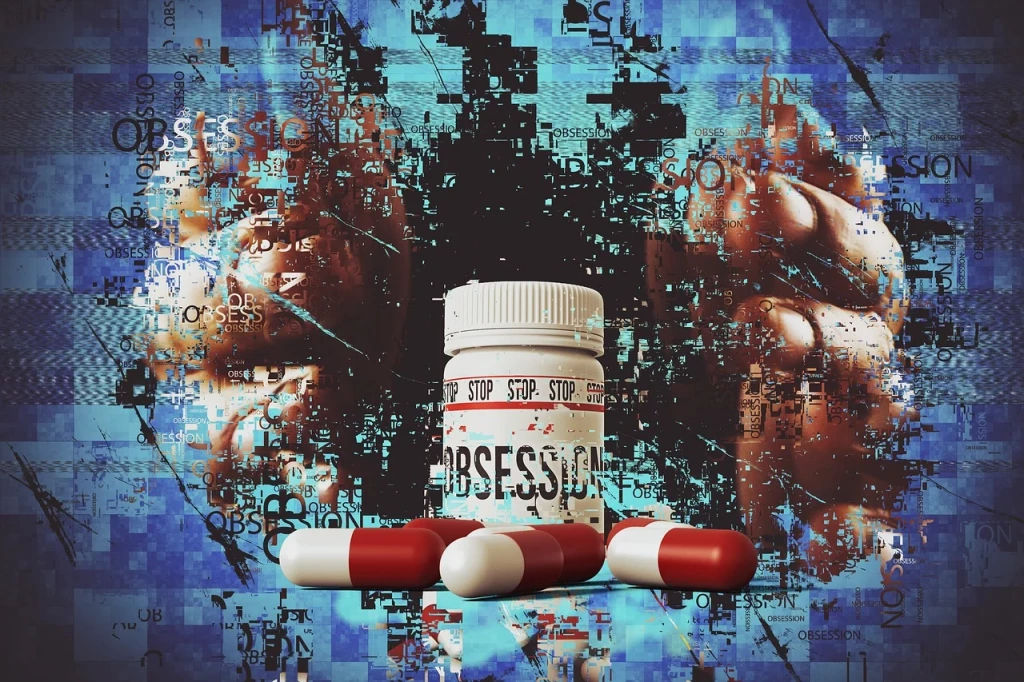
A survey conducted by the Government of Nepal in the year 2020, shows an average annual growth of 5.06 percent from the year 2013 to 2020 in the number of drug users in the country.
The survey found 1, 00,165 (76.2 percent) drug users were below the age of 30 years. It is evident that there is a need to address the growing problem of drug addiction in youths of the country.
‘Recovering Nepal’ serves as a National Federation of people who have had a history of drug use and organizations working to resolve the drug problem in Nepal. Recovering Nepal has over 166 member organizations under its national umbrella.

According to Bishnu Fueal Sharma the chief executive officer (CEO) of Recovering Nepal, drug addiction is a major problem existent in Nepal. “In issues such as drug abuse simply awareness is not enough, there should be proper education given to people about the harmful effects of substance abuse,” says Sharma.
“ In their youth a person is more likely to imitate other people he or she is surrounded with, it is also a time when people want to experience and try out new things. This makes the youths more susceptible to drug abuse than older people.” says Sharma.
Similarly, a survey conducted by the Ministry of Home Affairs in the year 2020, also shows that peer pressure and recreation were the major reasons people began using drugs the first time.
Cannabis is the most commonly used drug in Nepal, followed by tranquillizers and opiates.
With its national outreach and experience, Recovering Nepal categorizes people who are most affected by substance abuse. They include: people who inject drugs, people who practice homosexuality, females working in the sex industry, migrants and their spouses, and adults and children living with HIV.
The number organizations working under ‘Recovering Nepal’ provide technical assistance to people and advocates for increased access to affordable , quality and comprehensive healthcare and medical support services related to Human Immunodeficiency Virus (HIV) such as harm reduction, drug treatment, ARV/TB therapy, HIV testing and psychosocial counseling.
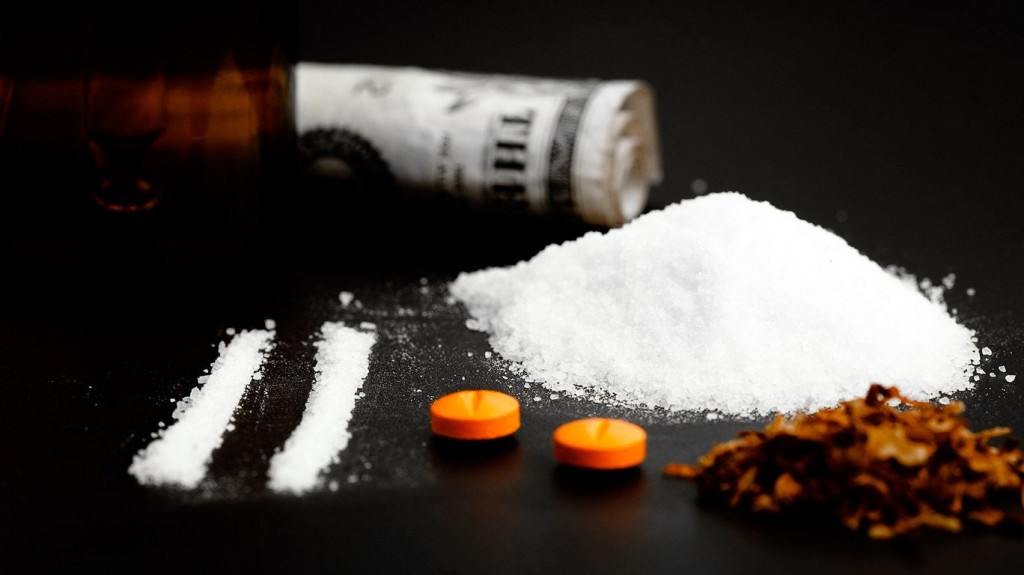
According to the latest survey conducted by the government of Nepal, there are 1, 30,424 drug users in Nepal. Among them, 1, 21,692 (93.3 percent) are male and 8,732 (6.7 percent) are female.
However, while taking into consideration the data of drug users as per gender for policy development, it is important to keep in mind the gender norms of the society, regarding female drug users.
A report published by the ministry of Home affairs Nepal in 2020, reveals that they were only able to reach 5 % women respondents out of 2000 interviews taken for the survey.
The female respondents are extremely low as compared to men, highlighting the vulnerabilities and discrimination faced by women who use drugs in the Nepalese society.
Unemployment is another issue related to drug users. The percentage of people who use drugs in Nepal and are unemployed is as high as 40 per cent. Moreover, the unemployment rate is significantly higher in female drug users than in men.
An interesting fact the survey reveals, which needs further exploration as to why it is so, is that 62.7% of people who use drugs in Nepal are unmarried, while the percentage of married people who use drugs is at 34.3%. Divorced and separated people account for 1.2% and 1.6% of the total drug users in the country respectively.
- Can cancer blood tests live up to promise of saving lives?
- Why US inflation is so high, and when it may ease
- Three arrested with drugs
- Exercise lowers risk of getting bowel cancer: Research
Recent News

T20 World Cricket Cup match between Nepal and Netherlands starts

World Cup cricket match between Nepal and Netherlands

Lama treks from Kathmandu to Mt Everest peak

Target of 6% economic growth rate possible, Finance Minister Pun reiterates

Best wishes to the Nepalese cricket team from India
Additional news.
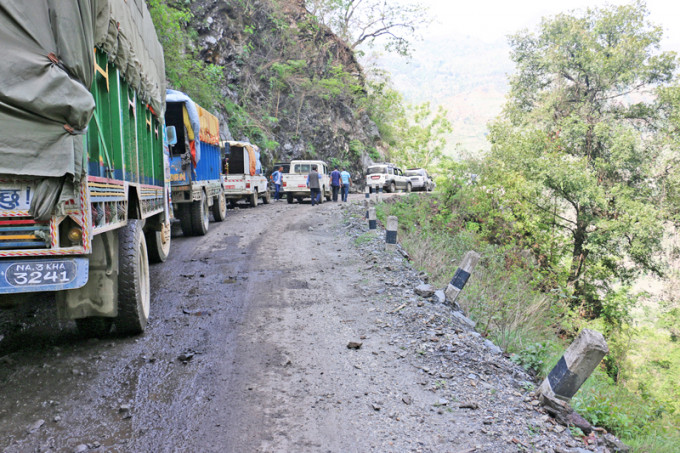
Kanti Highway comes into full operation from today
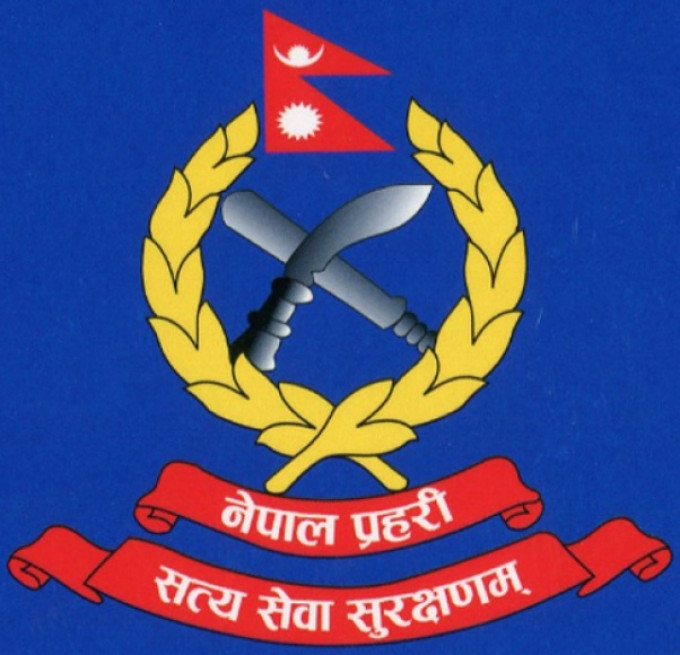
Two yarsa pickers die from altitude sickness

Surkhet road accident update: death toll rises to four
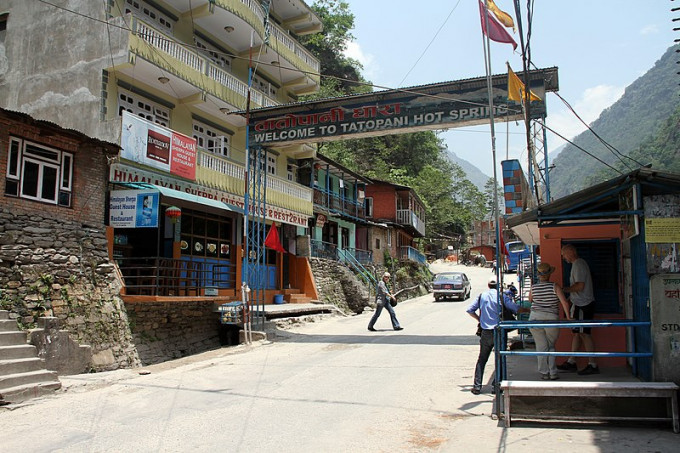
China ready to help upgrade Barhabise-Tatopani road: Ambassador Chen
Editor's choice.
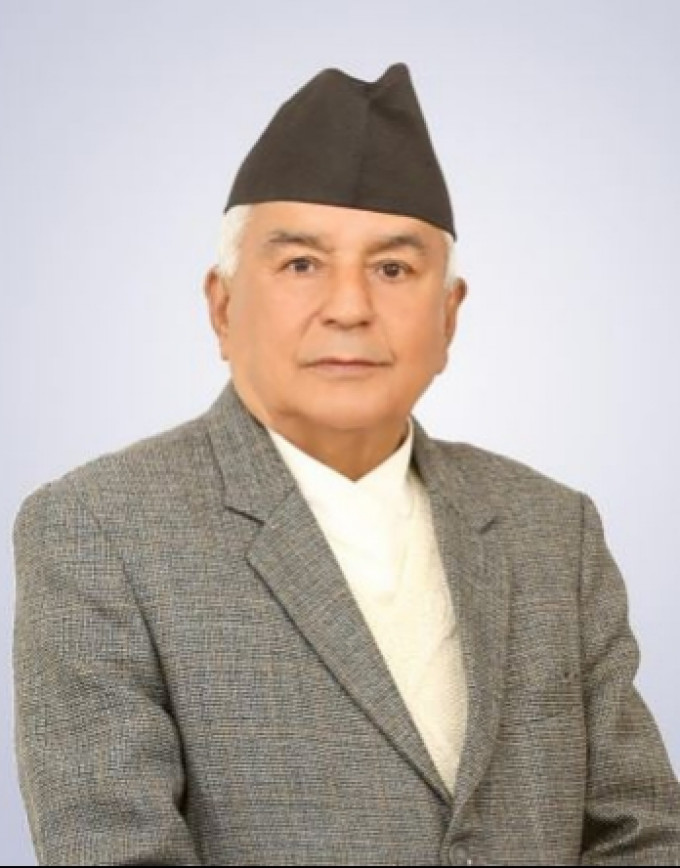
President Paudel extends best wishes to Nepali cricket team in US
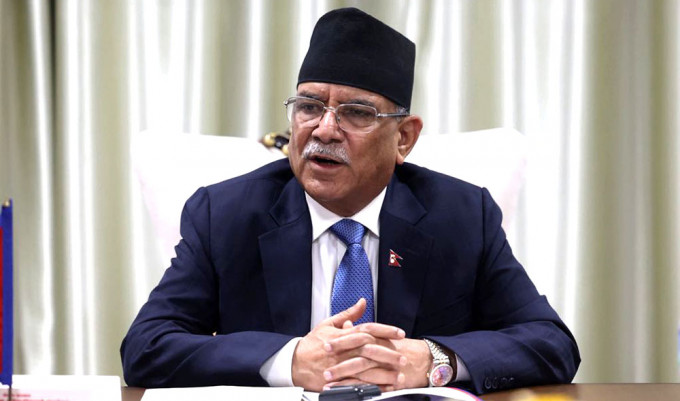
PM Dahal extends best wishes to Nepali cricketers

Tremor felt in Nepa of Dailekh
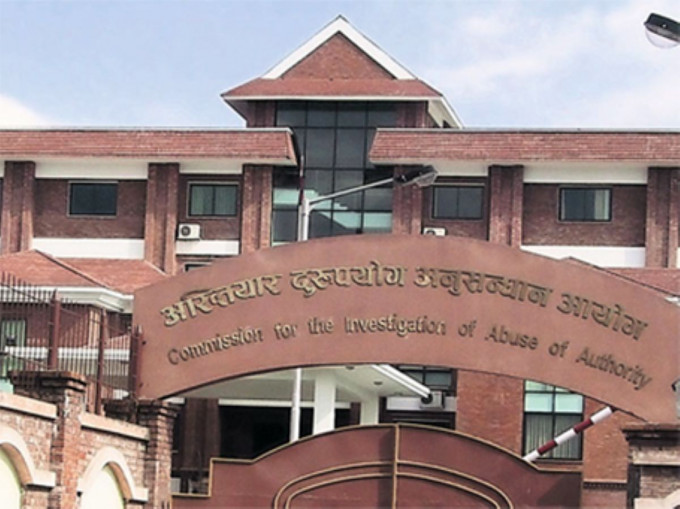
Case of corruption filed against Godavari ex-mayor and deputy
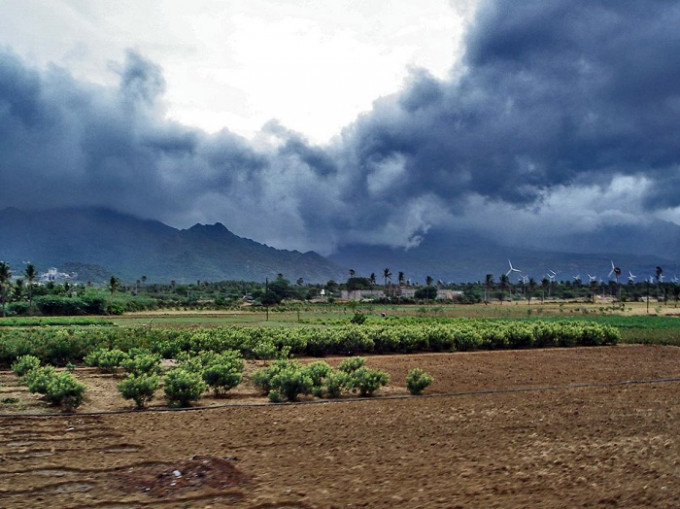
Over 1.8 million people likely to be affected in monsoon this year

Social Media
Exploration.
- Privacy Policy

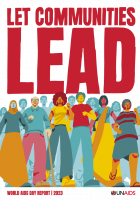
- About UNAIDS
- Global AIDS Strategy 2021-2026
- United Nations declarations and goals
- UNAIDS governance
- UNAIDS Programme Coordinating Board
- Results and transparency portal
- UNAIDS Cosponsors
- UNAIDS ambassadors and global advocates
- UNAIDS leadership
- UNAIDS evaluation office
- UNAIDS ethics office
- UNAIDS transformation
- Community pandemic response
- Education Plus Initiative
- Global alliance to end AIDS in children
- Equal access to cutting edge HIV technologies
- Save lives: Decriminalize
- Global council on inequality, AIDS and pandemics
- Resources and financing
- War in Ukraine
- Global HIV Prevention Coalition
- Global Partnership to Eliminate Stigma and Discrimination
- COVID-19 and HIV
- 2025 AIDS targets
- AIDS and SDGs
- Community mobilization
- Fast-Track cities
- H6 partnership
- HIV prevention
- HIV treatment
- Human rights
- Key populations
- Private sector and the AIDS response
- Security and humanitarian affairs
- Social protection
- Universal health coverage
- Young people
- Press centre
- Publications
- Infographics
- FAQ on HIV and AIDS
- World AIDS Day
- Zero Discrimination Day
- Latest data on HIV
- Data on key populations
- Laws and policies
- HIV financial resources
- Technical Support Mechanism
- Learn about HIV and AIDS
- Take action
- Become a donor
- Investment Book

Feature story
Demanding more options for young people who use drugs in nepal.
26 June 2023
“Drugs were a way to escape from reality.
“Drugs were a way to escape from reality. But because of it, I have faced a lot of discrimination,” said Yukusna Kurumbang. “After a while I had no one around me. No friends I could contact. I have my family but they do not trust me. I am trying to improve.”
There aren’t many resources at Ms. Kurumbang’s disposal. She’s fashioned her own path to recovery including volunteering with YKP Lead Nepal—a youth-led organisation.
“I’m investing in myself and others to escape drugs,” she explained. “I’m trying to control my mind.”
The organisation’s President, Rojal Maharajan, recalls the feeling of isolation he too faced while using: “It’s very humiliating—the gossiping and negative comments. My family also got sick and tired of me. Eventually I had no one to tell about my problems and my mental health status.”
He started his advocacy eight years ago after a successful rehabilitation stint.
“I wanted to do this work to make sure young people who use drugs are treated as human beings. They deserve to have a good life and better opportunities,” he said.
These deeply personal perspectives help YKP Lead Nepal respond to the addiction challenge facing Nepal’s youth. And it’s a complex challenge.
There was a 2021 review of the human rights situation of people who use drugs in Nepal by the International Drug Policy Consortium, Recovering Nepal, YKP LEAD Nepal and Youth Rise International. It notes that the Narcotic Drugs Act criminalises not only drug possession, but addiction itself. According to a 2019 survey of people who use drugs, almost half had been arrested for drug use or a related offence. Among people who injected drugs the arrest rate shot up to 63%.
Treatment for drug dependence is privatised and inaccessible to most, including residents of border towns where services are most scarce. Among those who have had access to drug treatment, one in ten reports having experienced ill-treatment, violence and even torture.
The Government of Nepal has made progress around the provision of harm reduction services including needle and syringe programmes and opiate agonist therapy (OAT). However there are allegations that police frequently harass and detain people visiting these facilities.
“Punitive drug policies across the region have created a culture of violence and impunity by law enforcement,” said Ikka Noviyanti, Regional Coordinator of Youth LEAD , the Asia and the Pacific young key population network. “This makes it more difficult for people to reach the range of prevention and treatment services they need to stay safe. The situation is even more dire for youths.”
A 2019 Ministry of Home Affairs survey determined that over three-quarters of people who use drugs in Nepal are under age 30. Another study found that one-third of young people who use drugs started before age 15, with almost half commencing drug use between 15 and 19. The advocates say that in lieu of heroin which is expensive, there’s a growing trend of young people mixing and injecting tranquilizers like Diagepam, Nitrazepam and Dormin.
Injecting drug use increases the risk of abscesses as well as illnesses including HIV, Hepatitis B and C. HIV prevalence for injecting drug users is 3% for males and 2% for females. By comparison, Nepal’s adult general population HIV prevalence is 0.1%. YKP Lead Nepal is advocating for disaggregated data so they can better grasp the scale of the HIV burden carried by young people.
The organisation shares safety information with clients along with clean needles and syringes. During the Covid-19 lockdowns, for example, they home delivered both food and harm reduction packages. Their outreach includes homeless young people.
But the advocates say that even when clients are aware of the risks, there are barriers to staying safe.
“Most of them don’t want to go to the service sites,” Mr Maharajan explained. “Many of the young women have told us they are harassed at the OAT clinics. Others have a concern that the people running the needle exchange programmes are from rehabs. They don’t want to be forced to go (to rehab) because they are fearful of torture.”
UNAIDS Country Director for Nepal, Masauso Nzima, says that the Government of Nepal has made a move in the right direction with its investment in harm reduction services. However, more needs to be done to ensure a people-centred approach to drug policies “if we are to make a sustained difference in the lives of young people”.
“A critical step is the adoption of laws that treat drug dependence as a health condition rather than a crime. Action is also needed to outlaw torture and ill treatment, holding violators accountable and providing increased oversight for rehabilitation centres. Finally, we are advocating for expanded access to drug treatment and harm reduction programmes, without discrimination,” Mr Nzima said. “That means young people, women and people living in all parts of the country should have equitable access.”
YKP Lead Nepal goes a step further, calling for designated days for young women to access harm reduction services and for young people to be among the service providers.
With support from UNAIDS Asia Pacific, Youth LEAD is now piloting a “Regional Healthcare Worker Training Manual: Friendly HIV and SRHR services for young key populations in Asia Pacific”. The approach is meant to address the multiple barriers to young key populations accessing services including concerns about privacy and confidentiality, stigma and discrimination among healthcare providers, inconvenient opening hours and service packages that do not speak to their specific needs.
“Young people account for one of four new HIV infections in Asia and the Pacific,” Ms. Noviyanti said. “We are failing young people. But with targeted investments for youth-led responses and action we can turn the tide.”
Region/country
- Asia and Pacific
UN Plus relaunches to support and advocate for UN workforce members living with HIV
28 May 2024
Meet Azima: Frontline hero of the HIV response in Uzbekistan
27 May 2024
How communities led in the HIV response, saving lives in Eswatini at the peak of a crippling AIDS epidemic
25 April 2024
An official website of the United States government
The .gov means it’s official. Federal government websites often end in .gov or .mil. Before sharing sensitive information, make sure you’re on a federal government site.
The site is secure. The https:// ensures that you are connecting to the official website and that any information you provide is encrypted and transmitted securely.
- Publications
- Account settings
Preview improvements coming to the PMC website in October 2024. Learn More or Try it out now .
- Advanced Search
- Journal List
- JNMA J Nepal Med Assoc
- v.59(241); 2021 Sep

Cannabis Use and Abuse in Nepal: A Review of Studies
Dhana ratna shakya.
1 Department of Psychiatry, BP Koirala Institute of Health Sciences, Dharan, Nepal
Sandesh Raj Upadhaya
Milan thapa.
2 Health Foundation Nepal, Kathmandu, Nepal
Nepal is a geographically, ecologically, bio-culturally and ethnically diverse country. Cannabis has been a flora, used in various forms and ways and its effect has been variably a matter of concern in Nepal. Perception to its use has also been changing with time with the dynamics of various factors and trends around and in the world. The views of its proponents at times appear with relatively more powerful influence among people though the views of the opponents seem less, and relatively less influential. Proponents advocate for its legalization with highlights of its different uses and benefits whereas opponents, mainly mental health professionals point out sporadically its adverse consequences, mainly in psychological health. The purpose of this review is to explore the existing literature regarding cannabis use and abuse in Nepal. Search for articles for this review was performed in PubMed, Google Scholar, and Nepal Journal Online. We summarize and discuss about cannabis in various aspects in the Nepalese context. The overarching objective is to reflect upon the ongoing debate regarding its harm and benefits, thereby upon the issue of its legalization in Nepal.
INTRODUCTION
Cannabis is the most widely abused illicit drug globally. 1 Its source is the plants: Cannabis Sativa and Cannabis Indica 2 major ingredients being Δ9-TetraHydroCannabinol and Cannabidiol. One study reported Nepalese Hashish containing 17% A9-THC and 9% cannabidiol. 3
Ethno-medicine is practiced in Nepal for generations 4 , 5 and Cannabis has been used for treating diarrhea, constipation and snake-bites in remote communities. 6 Cannabis was widely used as cattle-fodder and fiber (hemp) in hills, and a few people used it as psychotropic-agents. Its use and attitude have, however, transformed across generations. 7 Its serious effects were mentioned as madness, weight-loss and decreased semen. 7 There are case-reports of 'toxic states', cannabis-induced psychosis, schizophrenia precipitation and association with depression. 8 Despite government ban-1973, it is still being used. In the pretext of ongoing worldwide discussion about decriminalization and legalization, this narrative review tries to give an overview of Nepal's available published evidence regarding its use and abuse.
LITERATURE SEARCH
This is a narrative review evaluating literature obtained using electronic search in databases of PubMed, Google Scholar, NepJOL published till June 2021. The following keywords were used in different combinations for the search: 'cannabis', 'medicinal', 'cannabidiol', 'THC', 'benefits', 'use', 'indication', 'abuse' and 'harm'. The search strategy used in PubMed was (cannabis[Title/Abstract]) AND (Nepal[Title/Abstract] OR use[Title/Abstract] OR abuse[Title/Abstract] OR indication[Title/Abstract] OR harm[Title/Abstract] OR benefits[Title/Abstract]. A total of 55 articles (case reports, cross-sectional, cohort, and reviews) on cannabis use/abuse in Nepal were included and others as deemed related to cannabis use/abuse in Nepal were cited. The included articles were evaluated by the reviewers to extract relevant information regarding the subject matter.
GLOBAL CONTEXT OF CANNABIS AB/USE
The least potent form among different potencies in the Indian subcontinent is marijuana and Bhang. Marijuana is consumed mainly as smoking cigarettes (joints) and edible form as bhang during the Holi festival. Intermediate potency (thrice as bhang/marihuana) is ganja obtained from leaves and flowering tops of the male and female plants usually inhaled by pipes. Highly potent (8 times as bhang/marihuana) form is Charas/Hashish obtained from the pure resin of the flowering tops and leaves of the female plant also smoked in pipes. 9
Over 192 million people, approximately 3.9% of the world population (15-64 years) used cannabis in 2016. Compared to 2006, there is a 16% increase in prevalence. West and Central Africa come first with 34.3 million users (13.2%), followed by North America with 41.5 million (12.9%), Oceania 2.9 million (11%), and least in East and South-East Asia with 9.7 million users (0.6%). 10 United Nations Drug Report states that the greatest rise in cannabis users from 2010 to 2016, comes from Africa and Asia. 11 According to the Global burden of disease (2019), cannabis use disorders resulted in 690,000 global years lost due to disability (YLD) accounting for 0.08% (0.05-0.1%) of total global YLDs. 12 National Epidemiologic Survey on Alcohol and Related Conditions (NESARC) study shows that the probable cumulative chance that cannabis users will transit into dependence in their lifetime is 8.9% and 50% of them will turn into dependence by 5 years. 13 The evidence shows more cases of psychotic disorder with increasing prevalence of daily use and use of high-potency cannabis in general population. 14
CANNABIS AS NEPALESE FLORA
Nepal is known for rich mega-biodiversity possessing a variety of plants with medicinal values. 15 Since prehistoric times, different plant source medicines have been used in Homeopathy, Ayurvedic, Allopathy and traditional medicine. Bioactive phytochemical constituents (e.g. alkaloids, tannins, flavonoids and some other phenolic compounds) are major contributors to medicinal value. Phenolic compounds possess different biological functions, e.g. antiinflammatory, anti-carcinogenic, anti-aging, cardioprotective, anti-atherosclerotic, and promotion of endothelial function. Saponin compound has been reported to cause tonic and stimulating effects. Among four selected medicinal plants (Ageratum Conyzoides, Eclipta Prostrata, Cannabis Sativa and Woodfordia Fructicosa); the highest amount of phenols, saponin, and essential oil are found in C. Sativa. 16
Even in rice fields of Nepal, several medicinal plants occur as weeds (grass and broadleaf) due to favorable geographical conditions. These weeds have economic importance due to medicinal, nutritional, industrial use, and as fodder for animals. Cannabis Sativa is among the broadleaf weeds. 17 Among 104 weed species belonging to 36 families in the rice field of Kathmandu valley that have medicinal values, the leaf of Cannabis sativa var. indica has been reported to have an antitumor effect. As a part of primary health care, traditional practitioners are still using these weeds in curing diseases and proper utilization of medicinal weeds is pointed out as the best strategy of weed management. 18 Cannabis, both in wild and cultivated varieties has been grown in Nepal for a long time. 8 It can be found growing wild mostly in the high hills of central, mid-west and far-western parts of Nepal. 19 Clarke R suggests in a study that northwest Nepal provides a unique example of a basic cannabis agricultural system that ensures all 3 major products-seeds and resin from female flowers, and fiber from stems. 20
After the imposition of law for punishment for possessing and using the drug, local traders still practice illegal trading in Nepal. Proponents of legalization advocate it as a strong mechanism to stop the illegal trade of medicinal plants and ultimately to increase revenue generation. 21
HISTORY OF CANNABIS USE IN NEPAL
The production and use of cannabis products in India and Nepal were well documented during the 19 th century by British colonial officials. 20 James Fisher wrote in 1975 that cannabis was historically cultivated across all altitudes and terrains of Nepal. 8 Before 1973, Kathmandu was viewed as a 'hippie paradise'. 9 Cannabis was widely available across the country, and there were even licensed dealers selling hashish in Kathmandu's famous 'Freak Street' ('Jhochhen' in Newari). 22 A large number of hippies from the western world traveled to Nepal to enjoy the readily available high-quality cannabis. Farmers were free to produce hashish. Nepalese youth gradually started following the hippies' lifestyle and its recreational use grew rapidly. In July 1973, the government of Nepal revoked all licenses to cultivate, buy and sell cannabis, and in September 1976, the Narcotic Drugs (Control) Act 2033 made cannabis illegal in Nepal. 9 James Fisher points out 3 factors contributing to this government crackdown 8 : (i) Nepalese alarm that their youth were being corrupted by cannabis; (ii) United Nation's pressure to join other 'respectable' nations in outlawing cannabis; and (iii) US pressure for narcotics control.
CANNABIS IN NEPAL
The Oldest Vedic Scripture mentions cannabis as a sacred plant due to its close association with Lord Shiva. Spiritually, it is used by Sadhus for meditation and to show their devotion towards Lord Shiva. In social context, people use cannabis at the time of gatherings, festivals, and mourning time to reduce anxiety and stress. Traditional medicine (Ayurveda) uses cannabis to treat ailments like food poisoning, digestion problems, gout and rheumatism and as a pain-relieving agent. It is used also to stimulate appetite and treat sleep problems. 9 Though illegal, cannabis continues to grow wild, is also cultivated in western and southern Nepal, remains easily accessible throughout the country and its use is largely tolerated without sanction during festivals such as Shivaratri. People use it for smoking and drinking as bhang (ground leaves and flowers from female plants). 9 Statistics of the Narcotics Control Bureau show cannabis as a consistently and most-seized substance in Nepal. 23 In 2018, a total of 4,181 kg of cannabis and 1,546 kg of hashish were seized with a slight rise on all accounts from the previous fiscal year. 23 Data suggest its cultivation to be widespread in Nepal and illegal trade rampant and unabated. 24
Recent years are witnessing a movement in Nepal to legalize its commercial production, pointing to its potential to become a lucrative cash crop and create employment opportunities. On March 2, 2020, a private bill named, 'Marijuana Cultivation Regulation and Management in Nepal' was registered by a member of parliament Sher Bahadur Tamang at the parliament secretariat of the House of Representatives demanding the legalization of marijuana cultivation in the country. 25 The advocates of its legalization in Nepal have been trying to convince people that Nepal could benefit immensely from legal cannabis industry, which is expected to reach $146.4 billion by 2025. 23 However, researchers and commentators have drawn attention to increasing cannabis use among young people in Nepal, and its health and social impacts. 9 The topic of its legalization to improve country's economy or restrict it to control its potential adverse effects remains a debate to date in Nepal.
CANNABIS ABUSE IN COMMUNITY
Illicit substances including opioids and cannabis are also highly prevalent after alcohol and tobacco in Nepal. 26 The 2012 Ministry of Home Affairs survey estimated that among 91,534 'hard drug' users in Nepal, 90.5% used cannabis, and 74.1% combined cannabis with 'tranquilizer'. 9 Among 393 intravenous drug users (mean age 27.76±4.86 years), who were all male from Kathmandu valley, the gateway drug for more other habit forming and illicit psychoactive substances was cannabis, along with tobacco products and alcohol. This was followed by the use of injection buprenorphine and a mixture of various psychoactive compounds (opiate, benzodiazepine and antihistamines). Intervention must be implemented at the root level to reduce the burden of multiple substances in newbies. 27
CANNABIS ABUSE IN CLINICAL SETTINGS
Among 55 all-male cases attending neuropsychiatric OPD of Western Regional Hospital, cannabis (30.9%) was the second most commonly abused illicit drug after intravenous injection buprenorphine (41.8%). Most (86%) were adolescents or young adults; 4% started their use before age 15. The mode of use was smoking cannabis mixed with tobacco multiple times a day. 28 A retrospective descriptive study of 100 in-patients of De-addiction Ward of TUTH reported cannabis as the commonest initial illicit drug. Among multiple substance users with alcohol as predominant substance (n=6), six were consuming cannabis; opiates as predominant substance (n=34), 15 were consuming cannabis; and benzodiazepine as the predominant substance was also consuming cannabis. Cannabis use is a highly comorbid condition with other substance use. 29
Among in-patients with alcohol dependence syndrome (ADS) in BPKIHS, 6/60 (10%) reported using cannabis. 30 A study conducted in seizure patients visiting a psychiatry out-patient clinic in BPKIHS found 4/100 patients reported to abuse cannabis (4%). 31 One percent of migraine headache psychiatry out-patients 32 and 4% (3/75) OCD psychiatry out-patients in BPKIHS reported abusing cannabis. 33
CANNABIS RESEARCH/LEGAL ASPECT IN NEPAL
Nepal, once famous as a hippie destination, still serves cannabis lovers around the globe. Voices of legalization pour aloud about the potential benefit of legalizing at least for cannabis research in Nepal considering the fact that this country has been a unique natural laboratory because of its diverse bioactive compounds due to extreme ecological alterations in short physical distance and its potential for benefit from at least efforts to study its harm and benefit. Regulated licensed growing facilities and household plant quotas given in specific parts of the country are pointed out to help reduce poverty. For international researchers seeking to collaborate in the name of North-South or East-West exchanges, Nepal has an advantage in terms of relatively lower overhead cost, softer ethics/regulations, and inviting visa options making Nepal an ideal for research about cannabis. 34
CANNABIS USE AMONG HEALTH SCIENCE STUDENTS IN NEPAL
Substance including cannabis problem among medical/health science students appears to be a great concern by a relatively fair number of the studies looking into it. 35 - 47 Investigation into cannabis ab/use has been a part of overall mental/health and substance research of most of these studies though there are a few studies intensively looking into cannabis use and problem among these students. Most of these studies have heterogeneous subjects (of various programs, years or schools). Although medical students are supposed to be and were relatively more aware about the negative consequences of psychoactive substances, cannabis use was fairly common among them. Most of them looked into its use which ranges from 1% (among nursing students) 39 to 40% (among those medical students consuming energy drinks 41 and 35% among dental students) 46 . The physical dependence and other consequences of cannabis among its users were not largely investigated thoroughly. Only a few studies looked into cannabis use disorder/abuse, which reported 2.25% 47 and other studies looked into problem use requiring medical attention, which reported 9%. 38 Most of the users were male 35 , 37 - 38 , 40 , 42 and had started using the substance after joining the medical college. 38 , 45 The prevalence of substance use was seen to have increased from the first year to the final year of medical college. 44 - 45 The major motivation behind its use was curiosity, pleasure, peer influence, and relieving stress. 36 - 38 , 39 , 40 , 44 , 45 Most of these were cross-sectional studies. Prospective or retrospective studies are necessary to understand the actual effect of cannabis on the health, study and other important aspects of the students.
AGE OF ONSET AND GENDER COMPARISON ABOUT CANNABIS
The mean age of onset of psychosis for cannabinoids users was younger; 21.80 years (SD=3.36) in comparison with alcohol users 37.95 years (SD=9.5) in a Nepalese study. 48 A study in western Nepal showed 50% of drug users started using drugs before the age 20. 49 In most of the studies in Nepal as in abroad; males outnumber females. 37 - 48 , 50 However, in one study among 78 dental students who used cannabis, females outnumbered male users of which 53 (67.95%) were females. 46
CAUSES OF CANNABIS ABUSE
The majority of medical students using cannabis gave the reason as pleasure-seeking and experimentation purpose. 45 Among intravenous drug users, the reason for starting a gateway drug (cannabis) was for the sake of pleasure. A study done among dental students reported pleasure-seeking and difficulty in handling pressure as the cause for the use of substances. 46 In a study among Ex-client of opioid substitution therapy (OST) in Kathmandu completing their OST, the average duration of cannabis use was 15 years. Many (17/20) users had consumed marijuana to seek pleasure; followed by peer influence, out of curiosity, and least used for getting high. Marijuana is also a popular drug during OST as almost all reported that OST and marijuana in combination reduce the craving for other drugs and at the same time produces the high effect. However, few individuals reported marijuana as a cause of relapse due to increased craving for other drugs. So, the evidence-based fact is inconclusive about using cannabis among OST clients and warrants further study. 51
CANNABIS USE; A GREAT THREAT TO MENTAL HEALTH
Cannabis and depression.
A cross-sectional study was carried out in 42 patients consecutively admitted in the psychiatric ward of Kathmandu Medical College Teaching Hospital and Punarjeevan Hospital. The Majority of them (73.8%) were found to be suffering from depression among which 22 (52.4%) patients used multiple substances like alcohol and cannabis. 52
CANNABIS AND ANXIETY
A study from Western Regional Hospital, Nepal showed panic disorder as the most common induced disorder after using cannabis (9/37 patients) who visited psychiatric OPD. 49 A case-control study was conducted with 30 total cases taking cannabis for a duration longer than 3 months with the frequency of sticks more than 6/months with 30 control groups from medical students. This research did not show any difference in anxiety levels between case and control, whereas alcohol and cigarette use was higher among cannabis users. 53
PSYCHOSIS, SCHIZOPHRENIA, ADHERENCE AND CANNABIS
Among 80 first-episode psychosis patients in TUTH, 38 (47.5%) had a history of either current or lifetime use of at least one substance group. Harmful use was present in 42.1% and dependence in remaining. Cannabis was the most commonly used illicit drug. Harmful use was present in 62.5% of cannabis users. Out of 10 cannabis users presenting with psychosis, 2 were diagnosed with schizophrenia, 1 with ATPD, and 7 (41%) with Mental and behavioral disorders due to psychoactive substance use, Psychotic disorder was the highest with cannabis among different substances including opioid and alcohol. 48 A case report of a 20-year-old man who had a brief episode of psychosis upon cannabis withdrawal due to the circumstance of COVID-19 lockdown following the regular heavy pattern highlights the fact that cannabis-induced psychosis is common in countries like Nepal where there is long term and heavy use of cannabis. 54 In a study from western Nepal, 37 cannabis-using patients were interviewed for DSM-IV (Diagnostic and statistical manual) psychiatric problems. The cannabis-induced psychotic disorder was found in 7 patients. There was a clear relationship with heavy use in which one patient developed within 24 hours of heavy bhang use. They presented with rapid onset behavioral changes like laughing or crying episodes, eating non-edibles, tearing clothes, biting people, and delusions of being controlled and hypnotized. Improvement was seen within 2-4 weeks of stopping cannabis and with a small dose of antipsychotics. 49 A cross-sectional descriptive study was conducted to study contributory factors for relapse among 95 schizophrenia patients coming to inpatient psychiatry services at Nepal Medical College Teaching Hospital. Substance dependence was a significant factor in the non-adherent group; 8 out of 11 cannabis dependence cases were from the nonadherent group. 55
CANNABIS AND OTHER SUBSTANCES
A descriptive study conducted in the de-addiction unit at the Centre for Mental Health (Chautari Nepal Health Foundation) in Rupandehi district of province-5, Nepal looked into the prevalence of psychoactive substance disorders. Out of 387 psychoactive substance users, 34.1% were in the age group 35 years and above and more than half (57.1%) belonged to Brahmin/Chhetri ethnic group. Many substance abusers (44.4%) had initiated the use between the ages of 16-20 years. Choice of substances in younger subjects was opioid (Brown sugar) (31%) and cannabis (16.27%) whereas older clients preferred alcohol. 50 From 5 different methadone clinics of Kathmandu valley, 84 clients were followed up for 6 months. Out of them, 63 patients remained in the methadone maintenance treatment (MMT) program. One of the significant factors associated with the dropout from the MMT program was poly-substance use in which cannabis was present along with alcohol, heroin, injectables, other opioids and benzodiazepines. 56
PSYCHOSOCIAL EFFECTS
The study was undertaken long back by BP Sharma (1975), the first psychiatrist of Nepal, to look into the effect of cannabis use for a long time regularly among 226 individuals, compared with control matched on age and education. The study found cannabis users had poor work records, interpersonal relationships, lack of interest in sexual activity, and overall loss of initiative and efficiency. 57 Similar replication was highlighted through a case report of a man with a diagnosis of cannabis dependence, cannabis-induced psychotic disorder (CIPD) (later bipolar mood: mania during intoxication and depression during withdrawal), presented in catatonia, published recently from eastern Nepal. 58
CANNABIS AND ENDOCRINE SYSTEM
A narrative review on endocrine effects of cannabis in different organ systems based on animal and human studies showed conflicting and contradictory results; some studies showing the lowering level of almost all hormones except cortisol and some studies showing no change in the level of effect. There is also the development of tolerance with repeated administration. Acute and transient effect is seen but long term effect is not conclusive, e.g. cannabis is considered to cause erectile dysfunction but many studies failed to prove the association between its use and lack of erection in men or lack of arousal in women. So, the definite cohort is warranted to establish its true effect. 59
KNOWLEDGE, ATTITUDE AND PRACTICE STUDY ABOUT CANNABIS
'Ganjedi' is local term for cannabis users, which literally means a person who cannot be relied on. 57 Marijuana use in different festivals like 'MahaShiva Ratri' and 'Holi' is a part of rituals based on its belief to be a boon. These socio-cultural factors contribute towards the use of marijuana which ultimately may turn an individual to be a hard drug user. 60 Screening of medical students for a lifetime and ever use of cannabis revealed 17/61 and current use 2/61; the highest among illicit drugs (heroin and other substances). Their belief system of addiction of substance (tobacco, alcohol, cannabis, heroin and other substance) assessed with Addiction Belief Scale showed majority of medical students believing predominantly the biological model of illness. 61 A study among Sadhus revealed that only 14% believed Lord Shiva to promote its use. Less educated and Naga sect Sadhus were more likely to view cannabis as a boon of Lord Shiva and provide it to devotees. Providing evidence-based information about cannabis and clarifying misbelief about Lord Shiva and cannabis to Sadhus have been pointed out as one of the strategies of harm reduction in people using substances. 9
TREATMENT CONTEXT
For subtypes of persistent headache or post craniotomy pain, cannabinoid derivatives have been mentioned as a potential candidate research molecule for formulating future Post Craniotomy Pain (PCP) management algorithm though Amitriptyline, Gabapentinoids, Carbamazepine or Sodium Valproate, steroid injection, and Botox injection are already available and commonly used medications. 62 A recent review from Nepal discusses evidence regarding the benefit and harm of cannabis in various neurological, psychiatric and other diseases with the assertion that the adverse effects are adequately evidence-based and are at times serious, especially for psychological health. 2
In 2010, World Health Organization (WHO) introduced Mental Health Gap Action Programme (mhGAP) for mental, neurological and substance use disorders (MNS) in a non-specialized health setting. The main aim is to enable non-specialists in primary healthcare to detect and treat priority MNS disorders and make appropriate referrals to a higher system of care. Under mhGAP-Intervention Guide training module locally adopted also in Nepal, Mental and Behavioral Disorders due to Substance Use, Cannabis has been discussed with different types of cannabis available. Different subheadings starting from introduction to different substance use, assessment, management, and follow-up along with emergency presentation are discussed. 63
CANNABIS; A HOT DEBATE ALSO IN NEPAL
Cannabis use in Nepal is intertwined with religious, cultural, economic since ancient times and later political perspectives. Amendment of the Narcotics Drug Control Act 1976 in Nepal prohibits the sale, cultivation and use of cannabis. UN 'Single Convention on Narcotics Drugs 1961' was also signed by Nepal in 2003. Nepal has also been swept by the wave of hot debate ongoing in the world about decriminalization and legalization of cannabis. With a vote of 27 in favor, Nepal also voted in December 2020 to remove cannabis from schedule-IV of the 1961 convention opening the avenue for its therapeutic use. A private bill was also registered at the House of Representatives in Nepal for the legalization of marijuana, mainly for medical use and export. Voices are outpouring in media to decriminalize cannabis use as the democratic generation doesnot want interference from the government with an individual's choice of what goes into their body as long as it does not harm others. 34 They view cannabis cultivation would boost the country's economy. 64
WAY FORWARD
Regarding medicinal use, only a few studies show some benefits in certain conditions (pain, nausea, vomiting, spasticity); mostly inconclusive. On the other hand, the current understanding of cannabis use in any form (medicinal or recreational) showed more evidence for harms than therapeutic benefits in the majority of health conditions mainly from the perspective of mental health effects and serious conditions (e.g. cardiac dysrhythmia). 2 Serious considerations and more study are warranted in this field before any step is taken and information about its use to be provided by policymakers to care providers, people and other stakeholders as public/individual health are of paramount importance.
Conflict of Interest
Click through the PLOS taxonomy to find articles in your field.
For more information about PLOS Subject Areas, click here .
Loading metrics
Open Access
Peer-reviewed
Research Article
A qualitative study to understand drivers of psychoactive substance use among Nepalese youth
Roles Conceptualization, Formal analysis, Funding acquisition, Investigation, Methodology, Project administration, Validation, Writing – review & editing
Affiliation Department of Public Health, School of Health and Allied Sciences, Pokhara University, Pokhara, Nepal
Contributed equally to this work with: Bhushan Khatiwada, Bibika Rajbhandari
Roles Data curation, Formal analysis, Methodology, Software, Writing – original draft, Writing – review & editing
Affiliations Torrens University, Pyrmont Campus, Sydney, Australia, Centre for Research Policy and Implementation, Biratnagar, Nepal
Roles Formal analysis, Methodology, Supervision, Writing – review & editing
Affiliation The George Institute for Global Health, University of New South Wales, Sydney, Australia
Roles Formal analysis, Methodology, Validation, Visualization, Writing – review & editing
Affiliation Centre for Primary Health Care and Equity, University of New South Wales, Sydney, Australia
Roles Formal analysis, Methodology, Validation, Visualization, Writing – original draft, Writing – review & editing
Affiliations School of Optometry and Vision Science, Faculty of Medicine and Health, UNSW, Sydney, Australia, Department of Infection and Immunology, Kathmandu Research Institute for Biological Sciences, Lalitpur, Nepal
Roles Investigation, Methodology, Supervision, Visualization, Writing – review & editing
Affiliation School of Health Medical and Applied Sciences, Central Queensland University, Sydney, Australia
Roles Conceptualization, Data curation, Formal analysis, Funding acquisition, Investigation, Methodology, Project administration, Resources, Software, Supervision, Validation, Visualization, Writing – original draft, Writing – review & editing
* E-mail: [email protected] , [email protected]
Affiliations Torrens University, Pyrmont Campus, Sydney, Australia, Centre for Research Policy and Implementation, Biratnagar, Nepal, Centre for Primary Health Care and Equity, University of New South Wales, Sydney, Australia, National Centre for Epidemiology and Population Health, The Australian National University, Canberra, Australia
- Tulsi Ram Bhandari,
- Bhushan Khatiwada,
- Bibika Rajbhandari,
- Amy Bestman,
- Sabuj Kanti Mistry,
- Binod Rayamajhee,
- Lal B. Rawal,
- Uday Narayan Yadav

- Published: November 5, 2021
- https://doi.org/10.1371/journal.pone.0259021
- Reader Comments
Psychoactive substance use among youth is an emerging public health issue in Nepal. This exploratory study aimed to better understand the drivers of psychoactive substance use among Nepalese youth in Rupandehi district of Nepal.
Materials and methods
This study used a qualitative approach for data collection. Both in-depth interviews (IDI, seven participants) and focus group discussions (FGD, 13 participants) were conducted among study participants who self-reported as psychoactive substance users or had history of psychoactive substance use. Participants for IDI were aged between 11 and 24 years and between 18 and 35 years old for FGDs. Semi-structured interview guides were prepared separately for IDIs and FDGs. Interviews were conducted in Nepali language and were audio recorded, which were there transcribed and translated into English for coding and analyses. In addition, interviews notes were taken by two research assistants. An inductive thematic analysis was used to analyze the data.
This study identified a range of drivers of psychoactive substances use among Nepalese youths. Themes included (i) socio-cultural factors, (ii) individual factors, (iii) academic environment, (iv) physical environment and the (v) influence of media. The socio-cultural factors were categorized into sub-themes of family relationships, ethnic identity and psychoactive substance use and lack of social acceptance. Individual factors included peer pressure, stress relief and coping with financial challenges. Accessibility and availability of psychoactive substances in the surrounding environment and lack of monitoring and reinforcement of rules/ law and regulations were other drivers to psychoactive substance use among this Nepalese youth cohort.
Our study identified several important drivers of psychoactive substance use among youth in the Rupandehi district of Nepal. Future works are anticipated to further explore youth initiation and use of psychoactive substances and support the design of interventions that address these risk factors to reduce and prevent subsequent harms.
Citation: Bhandari TR, Khatiwada B, Rajbhandari B, Bestman A, Mistry SK, Rayamajhee B, et al. (2021) A qualitative study to understand drivers of psychoactive substance use among Nepalese youth. PLoS ONE 16(11): e0259021. https://doi.org/10.1371/journal.pone.0259021
Editor: Chhabi Lal Ranabhat, Global Center for Research and Development (GCRD), UNITED STATES
Received: December 23, 2020; Accepted: October 11, 2021; Published: November 5, 2021
Copyright: © 2021 Bhandari et al. This is an open access article distributed under the terms of the Creative Commons Attribution License , which permits unrestricted use, distribution, and reproduction in any medium, provided the original author and source are credited.
Data Availability: All datasets generated and analyzed are not publicly available but are available from Centre for Research, Policy and Implementation, Nepal ( [email protected] ) upon reasonable request. The interview and focus group records are identifiable which cannot be shared because of legal and ethical boundaries.
Funding: The funders had no role in study design, data collection and analysis, decision to publish, or preparation of the manuscript.
Competing interests: The authors have declared that no competing interests exist.
Psychoactive substances include alcohol, tobacco, licit and illicit drugs, that when consumed, can harm the mental wellbeing of an individual [ 1 ]. In 2017, the United Nations Office on Drugs and Crime (UNODC) estimated 271 million people of age group 15–64 years used any form of drugs and 35 million people suffered from disorders associated with psychoactive substance use [ 2 ]. By the end of 2017, 11.8 million deaths were recorded globally due to direct and indirect use of psychoactive substances (predominantly tobacco, alcohol and drugs), out of which 11.4 million were premature deaths [ 3 ]. According to the World Health Organization (WHO) Global Health Estimates, in 2019 the proportion of Disability Adjusted Life Years (DALYs) due to alcohol use disorders globally was 0.76% and 0.78% due to drug use disorders [ 4 ] whereas, in Nepal, DALYs were 0.5% and 0.29% due to alcohol and drug use disorders, respectively [ 5 , 6 ].
In Nepal, sale of tobacco and alcohol products by non-licensed vendors have been restricted by law [ 7 , 8 ]. For example, it is illegal to sell tobacco products to individuals younger than 18 years [ 7 ] or alcohol to individual under 21 years [ 8 ]. However, despite these laws, it has been estimated that over 21,000 children between 10–14 years consume tobacco each year in Nepal [ 9 ]. Additionally, the narcotics control act of Nepal does not allow any person to consume cannabis/marijuana, with penalties such as one month behind the bars or a fine of NRs. 2000 (17 USD) for possession, however these vary on the amount of cannabis/marijuana possessed by an individual [ 10 ]. The most prevalent psychoactive substances used in Nepal are cannabis, tranquilizers, and opiates and the highest number of users has been reported from Bagmati Province, capital city of the country [ 11 ]. The influence of psychoactive substance misuse during early adolescence has been linked to entertainment, relaxation, curiosity, peer, and media influence [ 12 ].
The Government of Nepal survey conducted in 2019, found 130,424 people were using drugs in Nepal with 5.06% average annual growth from 2013 to 2019. Males accounted 93.3% of drug users (females account 6.7% of users) and 76.2% were below of age group 30 years [ 11 ]. According to another study conducted in Nepal in 2018 with 387 psychoactive substance users, 10.8% of psychoactive substance users began at 13–15 years and 44.4% started using psychoactive substances between 16 and 20 years [ 13 ]. Psychoactive substance use among youths is an important issue that effects both physical and mental health outcomes of youths [ 14 ]. Early-onset use of psychoactive substances has been linked to a range of health and social issues including poor physical and mental health, inadequate school performance, unemployment, substance use disorder, and seclusion, a strained relationship with family [ 15 ]. Previous research has also identified that the initiation of psychoactive substance use from early adolescence, can lead to cumulative public health challenges [ 16 ]. Evidence suggests that the high prevalence of adolescents using psychoactive substances in Nepal is significantly associated with parental use and cultural acceptance of psychoactive substances [ 17 , 18 ]. However, to date, there is scarce qualitative research that enables deeper understanding of experiences, phenomena and context of psychoactive substances use in Nepal, especially among youths. Thus, the current study was conducted to understand drivers of psychoactive substance use among Nepalese youth in Rupendehi district of Nepal.
Research design
This qualitative study used an interpretivist epistemological view to understand the drivers of psychoactive substance use among Nepalese youth in the Rupandehi district of Nepal [ 19 ]. This study used both in-depth interviews (IDI) and focus group discussions (FGD) in order to capture holistic description of the phenomenon. IDIs were selected to allow participants to share experiences openly in a safe environment without hesitation and allows researchers to pursue new themes that emerge during the interview. FDGs were chosen to explore diverse views on a particular phenomenon through group discussion and interaction of prominent issues [ 20 ].
Participant’s recruitment and sampling
Participants for this study were recruited from rehabilitation and treatment centers of Rupandehi district. Purposive sampling was used to recruit participants to ensure sampling variation across age, ethnicity, education status, occupation and economic status of the adolescents. Participants representing various ethnic groups were included; upper caste (Brahmin and Chhetri), indigenous groups (Newar, Tamang) and marginalized communities (Dalit). We only included participants who had reported previous use of psychoactive substances and excluded individuals diagnosed with severe psychiatric disorders, intent to harm self and others, or failed to produce assent consent.
Data collection
Data were collected from August 2017 to April 2018. This study recruited seven participants for face-to-face IDIs aged between 11 and 24 years. Each IDI lasted 18–25 minutes. Thirteen participants of aged 18–35 years were recruited for FGDs. Two FGDs were conducted at two different settings (one with a group of six participants and another with seven). Duration of FGDs were 40–45 minutes. All FGDs and IDIs were conducted in Nepali language by one of the investigators where notes were taken by two research assistants and were audio-recorded. Interviews were conducted in a comfortable environment to ensure open discussion and encourage all participants to describe their experiences. Questions and sub-questions invited open-responses and related to attitudes and perceptions of adolescents and reasons behind the early initiation of psychoactive substances. The scripts of data were read, re-read and discussed between two investigators to decide the point of saturation. After reaching saturation point, data collection process was topped.
Trustworthiness of the study
Validity and reliability of the findings were measured in terms of trustworthiness which comprises credibility, transferability, dependability and conformability of the study participants [ 21 ]. The investigator who conducted the IDIs and FGDs had a public health background and shared the same language and culture with majority of the study participants. This supported investigators to build rapport and ask appropriate follow up questions. Participants were genuinely willing to take part in the study and provided relevant information freely. The collected data were transcribed, translated, coded and analyzed by four authors and were checked by two lead authors (TB and UNY) for accuracy and consistency of the translations. Analyzed results were also checked by lead authors to examine any discrepancies and data obtained through both FGDs and IDIs were triangulated for similarities and variation [ 22 ].
Ethics approval
This study protocol was reviewed and approved by the Nepal Health Research Council Ethics committee, and approval from the District Education Office, Rupandehi, was also obtained prior to commencing field data collection. Written assent consents were obtained from parents of participants who were below 18 years old. Written informed consents were obtained from the rehabilitation centers and study participants. The confidentiality of all the participants and information obtained was maintained.
Data analysis
Data were analyzed using an inductive thematic approach, as suggested by Braun and Clarke [ 23 ]. Initial codes were developed, and researchers met to discuss the validity of codes in a broader context. The investigators reviewed the transcripts verbatim then developed codes and higher order themes until consensus was reached. The codes were critically analyzed to develop sub-themes and themes. Given that qualitative data was translated into English, some quotes have been edited to increase clarity for readers. Where quotes have been changed, these have included minor edits to language, however the meaning of quotes has remained same.
Out of 20 participants, 18 were male and two were female and half (n = 10) of participants did not reveal their ethnic identity. Among ten participants who provided information on ethnic identity, five were from indigenous groups, 2 from Dalit (so called low caste/ untouchable caste according to traditional Hindu caste system) and two from so called higher caste (one from Chhetri and another from Brahmin). There were total of 4 participants who were below 18 years old.
Five broad themes socio-cultural factors, individual factors, physical environment, academic environment and influence of media emerged from the data analysis of both FGD and IDI. These have been presented in Table 1 and have been explained below.
- PPT PowerPoint slide
- PNG larger image
- TIFF original image
https://doi.org/10.1371/journal.pone.0259021.t001
A. Socio-cultural factors
Socio-cultural factors included active engagement of people and, the cultural practices and influence of people, which impacted psychoactive substance use. This included environments created by families, cultural identity, cultural differences, attitudes and behaviors of people, parenting practices, ethnic identity and societal discrimination. Based on the information provided by participants, we identified the following sub-themes, youth and family relationships, role of peers, ethnicity and social acceptance.
i) Family relationships.
Participants described lack of supervision such as poor parental care, less support and minimal attention to youth as reasons for initiation and engagement in psychoactive substance use. Some participants referred to the impact of parental separation on their mental health and the role of psychoactive substance use in coping with resulting increased mental stress. For example, one participant from the Dalit community said:
“I got involved [with psychoactive substances] when I was seven years old while studying in a government school . My dad divorced my mum . You can imagine how much stress I had , and I could not bear that stress . To cope with that , I started using psychoactive substances” [Male participant, 12 years, Dalit community, IDI]
Some participants described that detachment from family members or the absence of family members to guide during adolescence period forced them to engage in psychoactive substance use. These participants mentioned that they used psychoactive substances as stressor and loneliness solace. One participant from the FGD explained after his parents separated, his mother went overseas to earn money. While he was without his mother, his elder brothers from the community who were involved in psychoactive substance encouraged him to initiate psychoactive substance use:
“After my mother left when I was eight years old there was no one to spend time with me at home . So , I started spending time outside and my cousins involved me in using psychoactive substance (drugs like Brown sugar . ” [Male Participant, 14 years, FGD].
Lack of attention from parents was also identified as a factor that influenced youth psychoactive substance use. Participants noted family members poor knowledge of youth activities, lack of parental affection, and lack of involvement of parents in their adolescent daily life. Some of the participants from the FGDs expressed parental inability to understand how the complexity of youth problems (for example, low grades in school, financial problems, stigma based on caste or ethnicity) led youths to escape through psychoactive substance use. One participant of FGDs told investigators that his parents adopted very cruel strategies in response to their psychoactive substance use.
“My family failed to understand me when I involved into drugs; they gave me different tortures in a sick mood (electric shock , canning , restricted me to go out , etc . ) . This forced me to engage more deeply into drugs use . ” [Male Participant, 19 years, Indigenous, FGD].
Some of the participants in IDI mentioned that poor parental monitoring and limited concern around adolescents’ activities prompted adolescents to become involved in psychoactive substance use, such as smoking cigarette and progression into the use of ‘hard’ psychoactive substances (drugs, nitrogen tablets, injection). One participant said,
“I think family members were responsible as well because they never asked for reasons behind asking the money to me . They (parents) usually provided me large sums of money , which is the main reason for getting indulged in these behaviors (using drugs) . ” [Male Participant, 24 years, FGD] “Family and friends are responsible for an equal amount . Nowadays , family members are more focused on earning money and in a way , they don’t care about adolescents . This leads to the development of the circle (people using psychoactive substance ) . ” [Male participant, 23 years, Chhetri, FGD].
ii) Ethnic identity and psychoactive substance use.
In Nepal, some ethnic groups such as Dalits, Indigenous groups like Rai , Magar , Newar , Sherpa and Limbu have a traditional value where they make alcohol in their own home to offer God and drink alcohol in festivals like Dashain or any family occasions like marriage or death ceremonies. Participants from indigenous groups identified that psychoactive substance use, mainly alcohol and tobacco use, as normal behavior. Nearly half of participants (n = 8) explained these cultural links as influential factor to their use of psychoactive substances:
“My mother used to make alcohol at home , and we [siblings] used to sell it . She [mother] used to ask me to taste alcohol to find the strength of alcohol and later my body asked for a higher alcohol dose , and then I became an alcohol addict . ” [Male participant, 24 years, Indigenous, FGD].
iii) Lack of social acceptance.
The majority of the participants in IDI mentioned that their history of psychoactive substance use mean they were not accepted in society, even after they got treatment for addiction. These attitudes pushed some to relapse into addictive habits:
“After leaving the rehabilitation center it was difficult for me to adjust to society . They call names like : ‘jadhya’ (alcoholic) and ‘dhule’ (drug addict) . Even if I am trying to do something good , the family and society don’t trust me , which forced me get use drugs again . ” [Male participant, 30 years, FGD]. “If my friends and families had supported at that time (after returning from rehabilitation) , you [ researcher ] would not see me here [ rehabilitation center ] today again . ” [Male Participant, 34 years, FGD].
One of the IDI participants mentioned that she was maltreated (emotional abuse) by the family members which forced her to use psychoactive substances again after returning from rehabilitation.
“My husband has a foreign ID (as my father-in-law is a foreign soldier) and he left for a foreign country to strengthen our financial status . After he left , the family members of the husband-side started giving torture [verbal and physical abuse] to me in a different way , and this is why I get into drugs use again (brown sugar , nitrogen tablets) . ” [Female participant, Indigenous community, 22 years, IDI].
Few participants from FGD expressed that psychoactive substance users should be given a chance in society to work or share their stories which would dissuade other young Nepalese people to use psychoactive substances.
“People with history of drug use should get income generating opportunities in the community . But society and family do not trust drug users . They [ psychoactive substances users ] are always blamed for any wrong things if happen in community such as if someone stole anything , the community people first reach to drug users to check if they stole it . This forces us [users] to return to drugs” [Male participant, 28 years, FGD].
B. Individual factors
Many factors that operate at individual level impedes decision making process among youths, resulting their engagement in psychoactive substance use. Peer pressure, source of relief and financial challenges are sub-themes that explain individual factors related to psychoactive substance use.
i) Peer pressure.
Most participants from both FGD and IDI believed that friends and peer groups were a key factor in initial psychoactive substance use (particularly Marijuana, Cannabis and alcohol use). This included direct or indirect influence or pressure from friend circles for psychoactive substance use.
“I started with "Chang" [a local alcoholic drink] at the age of 15 during my school life , as I was part of the bad circle [psychoactive substance users] in my school . Later on , I became resistant to change and decided to use other drug use such as syringes , brown sugar . ” [Female participant, 22 years, IDI].
The majority of participants from the FGD and IDI (all age groups and genders) shared their experiences that friends encouraged them and put pressure on them to try marijuana and other drugs. The social influence from the user and the supportive friendship provided an environment that encouraged others to abuse psychoactive substances. One of the participants said-
“My friend circle motivated me a lot by giving examples like , look nothing happened to us . As they were taking the weed , nitrogen tablets , brown sugar for a long time , and life is a matter of enjoyment , and ultimately I got involved . ” [Male participant 23 years, Chhetri, FGD].
Some participants of FGDs and IDI said that friend circles played a key role in alcohol initiation, by highlighting the relationship with alcohol and culture. Most participants from ethnic groups mentioned that they started with homemade alcohol and later their curiosity to try other forms of psychoactive substances (weed, brown sugar) increased. One participant said-
“I got involved in drugs (weed) via my friend circle which was created at school . I started at the age of 12 . They pressured me showing ethnic relations to alcohol -Khana kei hudaina…jaat le deko yar [ Have it, it’s the gift given by your ethnicity, English translation ] and I felt it true and started taking it . ” [Male participant, 24 years, indigenous, FGD].
The majority of the participants from IDIs mentioned that their friends encouraged them to use psychoactive substances to get relief from stress.
“I asked for solutions with my friend , and they told me to take these drugs and will get relief from the tension . But , after getting into this (substance use) , it’s hard to withdraw . ” [Male participant, 23 years, Chhetri, FGD].

ii) Source of stress relief.
Youth used psychoactive substances as a source of relief in order to alleviate frustration and stress.
Most of the participants of FGDs expressed that they used psychoactive substances as a coping strategy to deal with stress caused because of the break-up in a relationship and family problems:
“I start using drugs to get relief from tension caused by study and financial hardship . ” [Male participant, 22 years, IDI].
A few participants said that they have seen people relaxed, and free of tension or negative feelings through the use of psychoactive substances, which motivated them to try substances:
“Psychoactive substance use gave me energy and a sense of belief that stress , and problems can be solved” . [Male Participant, 19 years, Brahmin, FGD].
iii) Financial challenges.
Most of the participants cited financial challenges as a pertinent factor behind psychoactive substance use. One participant expressed:
“We [my family] took a loan from someone in our community with an interest of 10% per month to build a home . We paid interest and huge amount but at last , he [loan giver] did not return our property . This put me in tension and to cope with that I started taking drugs . ” [Male Participant, 23 years, IDI].
Additionally, few participants described the financial challenges faced by Nepalese students in foreign countries increases the risk of drug abuse. One participant of IDI shared the following experience:
“I was in Australia and was not able to find a job and family could not support me financially as they already had loans and I could not cope up with the situations which forced me to involve in using drugs . ” [Male participant, 22 years, IDI].
C. Physical environment
The physical environment played a substantial role in shaping the attitudes and behaviors of individuals and influencing norms and values. In this context, two key themes emerged relating to the physical environment: the accessibility and availability of psychoactive substances in the surrounding environment, and the lack of monitoring and enforcements by authorities.
i) Accessibility and availability of psychoactive substances in the surrounding environment.
Participants identified the easy availability of psychoactive substances in the home, neighborhood, local markets, or near city areas where psychoactive substances like alcohol, cigarettes, marijuana and illegal drugs are available to youth. Participants said that this type of environment encourage youth to try psychoactive substances at first, which leads to sustained psychoactive substance use. Participants of FGDs mentioned that tobacco, alcohol, and substances like nitrogen tablets, brown sugar and marijuana were readily available in the local pharmacy and grocery shops (which is illegal in Nepal) and can be purchased very easily using peer network. One of the participants said:
“I started taking Nitrogen tablets in beginning , later on , brown sugar , opium . It is easily available in the Butwal markets . ” [Male participant, 19 years, Indigenous, FGD].
Similarly, one participant from IDI mentioned his experience of buying psychoactive substances even from pharmacy shops.
“Drugs are easily available from Butwal pharmacy , they [pharmacists] do everything for money . ” [Male participant, 21 years, IDI].
Participants from IDI and FGDs also stated that the accessibility of psychoactive substances at the nearby Indo-Nepal border facilitated adolescent initiation of psychoactive substances (such as Nitrogen tablets, brown sugar, cocaine, heroin). Over-the-counter medicine consumption is common in both rural and urban setting of Nepal because people can get medicines directly from unregulated non-pharmacist run registered/unregistered ‘drug shops’ similar to grocery shops. Some participants of IDIs and FGDs specifically referred to the availability and use of cough syrups (Phensedyl), Dendrites (adhesive synthetic product for footwear), fevicol glue (a synthetic adhesive used for woodworks) and sedatives like Nembutal, zolpidem and Seconal.
ii) Monitoring and enforcement.
Most of the participants in this study (in both FGDs and IDIs) believed that political bodies, local policemen, shopkeepers (particularly grocery stores), pharmacists and border personnel at the Indo-Nepal border enable environments that allow for the availability of psychoactive substances (including nitrogen tablets, brown sugar and heroin). Additionally, participants noted the role that authorities play in the drug smuggling process. One participant of IDI shared his experience who had seen some police officials involved in trading psychoactive substances and drug paraphernalia:
“Few policemen are also drug addicts , and they know the supply mechanism . Under [policemen] support drugs are available in the market . Besides policemen , there are many high-profile people in drug trading in Butwal . ” [Male Participant, 23 years, IDI].
A few of the participants from FGD mentioned that it was easy to escape from the police by giving bribes if they were caught in drug trafficking:
“I was caught once by the police but bribing police with was enough to escape from border . ” [Male participant, 26 years, FGD].
Most participants in IDI described that the inadequate monitoring of psychoactive substances in society such as public bars, pubs, restaurants, and sometimes brothels, where psychoactive substances were sold and used on site. Some of the participants of IDI also mentioned that adolescents and women from marginalized communities (Indigenous and Dalit community) were generally involved in the cross-border trafficking of drugs, as officials overlooked traffickers either because of their age or physical status (i.e., those who appeared poor and vulnerable were allowed to travel without checking).
“I used to wrap the drugs in the plastic and keep it inside the shoe insole so that police can’t find it . Using this technique , I transported drugs to Butwal . ” [Male participant, 22 years, Indigenous, IDI].
A small number of participants described taking risks to hide or transport drugs to be undetected. This included getting involved in trafficking psychoactive substances through swallowing small plastic pouches or mixing psychoactive substances with other large food items:
“I got into cross-border drug supply since the age of 7 years old . They [smugglers] trained me in swallowing brown sugar sachets in India . After crossing border (India-Nepal border) I excrete those sachets in Nepal through stool . This was the safest way to escape the border police . ” [Male participant, 11 years, Dalit Community, FGD].
D. Academic environment
The school environment also played a vital role in students’ lives. Youths spent a large amount of time in school among other fellow students and teachers. Participants from FGDs and IDI explicitly mentioned that failure to achieve good grades and lack of support from teachers was the primary reason to leave school and use psychoactive substances.
“Actually , in my case , the schoolteacher never supported me and used to give my example in the class . This guy [indicating participant ] is good for nothing , and he cannot do anything in the future . With all this , I opt out of school and later got involved in using drugs . ” [Male participant, 19 years, Indigenous, FGD]. “I was weak in study and my school friends suggested that using diazepam and morphine [pharmaceutical drugs] can improve concentration on the study . I used these drugs for sometimes and later it became too hard to withdraw [ stop drug use ] . ” [Male participant, 16 years, Chhetri, FGD].
E. Influence of media
Participants reported that digital media and television programs glamorized psychoactive substance use, which directly influenced especially, adolescents and adults to try psychoactive substances. Some participants in the FGDs mentioned the use of psychoactive substances by celebrities in movies or on social media pages, while some participants from IDIs said that their use of psychoactive substances (tobacco, alcohol, or marijuana) was to feel like an actor in a movie or television-serial. This copying practice was perceived as fun or exciting and led to the experimentation of psychoactive substances. In some cases, this led to sustained use of substances and abuse of psychoactive substances. One of the participants of FGD said, he used to have various non-prescribed medicines and available materials like dendrites (glue) to have fun and a good feeling, which turned him to be psychoactive substances abuser:
“ I used dendrites , mixed different medical drugs* . I used to try different pharmaceutical drugs to get in the mood . ” [Male Participants, 30 years, Indigenous, FGD].
* Note. Mixing of the liquid drugs used to treat kidney disease patients to get ‘a good kick’.
This study identified crucial socio-cultural, individual, physical environment, academic environments and the influence of media, as key fueling factors of psychoactive substance use among Nepalese youths of this study. Despite a small study group, consisting of 20 participants, this study presents a rich source of information on the factors that influence youth initiation and use of psychoactive substances in Nepal. This research reports on the experiences of youth who had been at rehabilitation centers (and some from a very young age). While this may be unique to the current sample, it will be important that future research explores whether these themes emerge in a sample of youth from the general population of Nepal. This research serves as an important starting point to better understand these behaviors and develop appropriate interventions to reduce the harm caused by use of psychoactive substances.
The findings of this study identified the family, culture, and societal environment, where the growth and development of individuals take place, as an initiating factor for psychoactive substance use among youth in Nepal. Parental separation, detachment from family members and poor parental supervision contribute to stress among adolescents, which encouraged them to use psychoactive substances. This finding is consistent with other research that found family environment as a determining factor for the engagement of youths in psychoactive substance handling and use [ 24 , 25 ]. Studies have also reported high use of psychoactive substances among adolescents who return from rehabilitation centres (due to peer pressure, family level conflict or adjustment within family, low self-confidence, and low acceptance by the society) [ 26 , 27 ]. However, given the cultural nuances identified in this cohort, future research should seek to better understand how these societal factors interact with each other, as well as other factors that shapes pathways to psychoactive substance use among Nepalese youths.
This study also found ethnicity as a key driver for psychoactive substance use among Nepalese youth. Prior research from India have highlighted that alcohol use among some indigenous communities is strongly connected to cultural rituals where part of alcohol is offered to the god and the remaining is consumed by the devotees as prasad (a devotional offering made to a god and later shared by devotee) [ 28 , 29 ]. The cultural acceptances of psychoactive substance use in some ethnic groups have previously documented in studies from Nepal [ 17 , 30 ]. However, previous studies from Nepal reported that the non-indigenous communities were more involved in psychoactive substance use compared to indigenous people [ 13 , 31 ]. This might be because of the cultural differences where one specific community culture provides a favorable environment for youth of other communities to use psychoactive substances such as alcohol, while these activities are less accepted in their own community.
It was perhaps no surprise that peer groups appeared to play a very influential role for the initiation and continued use of psychoactive substances, especially among youths, given previous studies conducted in Nepal and other countries showed the influence of peers to use psychoactive substances [ 32 – 35 ]. Since adolescents and youth share special bonding rituals with friends, it is easier to be influenced by the behaviors of friends and difficult to reject offers of psychoactive substance use [ 36 ]. In addition, the influence to use psychoactive substance from their peer circle can be explained by societal cognitive theory which highlights some of the factors like environment and others action play a vital role in behavioral change [ 37 ]. Also, studies have reported factors such as appreciation shown by peer circle can induce the psychoactive substance use [ 38 ].
This study also observed the use of psychoactive substance in relation to stress management. This supports other evidence that shows stressful events and traumatic exposure creates neurological shifting which may decrease behavioral control and accelerates the risk of maladaptive behavior [ 39 ]. This is also supported by other studies that found use of psychoactive substance as a source of relaxation and relief among students [ 36 , 40 ]. The financial status of the individual and family was found to be contributing factor to increased use of psychoactive substances. Low financial status and economic instability generates stress and acts as a stimulant of psychoactive substance initiation. A previous study reported interconnection between economic crisis and increased prevalence of psychoactive substance abuse, needle and syringe sharing [ 41 , 42 ]. Beside these, the misuse of having higher financial capability was also associated with the high connection with psychoactive substance user gangs and increased psychoactive substance use like alcohol, marijuana which is consistent with other studies [ 43 – 45 ].
Easy availability of psychoactive substances in local markets was identified as an enabling factor for use among youths. Readily available alcohol and tobacco in the household was the first choice of psychoactive substance among our study participants which was also reported in previous studies [ 17 , 46 ]. Misuse of pharmacological drugs was reported by many participants in the present study. Similarly, misuse of psychotropic drugs and the facilitation of over-the-counter drugs were found in other studies [ 47 ]. Furthermore, minor opiates and pain medicines (Temazepam, Flurazepam) were found to be commonly misused by healthcare students for getting kick [ 32 ]. In addition, poor monitoring of security personnel in the Nepal-India border aids to cross-border trafficking and easy availability of psychoactive substance in the local market [ 48 ]. Poor academic performance and grades cause stress among youth which increases risk of psychoactive substance use as a coping mechanism. Such students engage in psychoactive substance use with hope of gaining better scores and to get relief from the dissatisfaction caused by the poor academic achievements [ 36 , 49 , 50 ]. The present study showed academic pressure as an enabler for psychoactive substance abuse among youth and this highlights the importance of school/college-based intervention to improve study environment. This can be done by creating school policies to recognize students with high level of stress, inclusion of extra curriculum chapters such as stress management education, encouragement, good communication and motivation to the needy ones [ 51 ]. In addition, to minimize the psychological distress among students, incorporation of life and social skills training and problem-based learning skills in an academic curriculum which may help students to function independently and choose right decisions [ 52 ]. According to United Nations Office on Drugs and Crime, skills-based health education includes the interactive sessions by skilled teacher which helps in building personal and social abilities to deal with daily life circumstances that one faces [ 53 ].
The present study revealed the influence of media and celebrities in promoting psychoactive substance use among youth. Media often portrays psychoactive substances as a source of entertainment through role play which indirectly fosters psychoactive substance use [ 54 ]. It is highly likely that psychoactive substances use among youths increases when media artists publicly demonstrate drinking alcohol, smoking cigarette or using drugs to show aggressive behavior, cope with personal circumstances such as relationship break-up, financial challenges or demonstrate the power in their networks. Prior studies have demonstrated the role of media in promoting substance use among youth [ 55 , 56 ].
Youth who are involved in psychoactive substance use were found to be indulged with various unlawful behaviors such as involvement in vigorous and gang sex, criminal mischief and in burglary to collect money to have psychoactive substances [ 57 – 60 ].
Our findings suggest the need for interventions that deliver cultural friendly health literacy initiatives to be operated at different levels such as school, community, youth clubs to educate youths on the detrimental effects of using psychoactive substances and providing information on the available services to help them to get rid of psychoactive substance use. In addition, youth identified as at-risk should be supported through targeted activities that seek to identify and prevent factors that enable pathways to psychoactive substance use. We also suggest the need for strong implementation of policies that prohibit the psychoactive substances being sold to children below 18 years. Further, we suggest the need for national level research focusing on youth to understand the social and structural determinants of psychoactive substance use among Nepalese youths. The findings from such study may help the government of Nepal to develop policies and strategies to curb psychoactive substance use among the youths.
Strengths and limitations
Strengths of this study include that this is one of the first qualitative studies conducted in Nepal that seeks to understand the factors that influence psychoactive substance use initiation, rather than collecting survey data. This study also provides starting point for additional in-depth qualitative studies based on findings AND knowledge developed in this study. One of the key limitations of this study was a small study conducted within participants of one district from participants who were in rehabilitation centers, therefore the findings may not be generalizable to the broader population of the country. Another limitation is that we did not collect data from family and community members, teachers and other stakeholders who could have provided more insights on this research area.
This study explored multiple factors that influenced initiation and engagement in psychoactive substance use among young people in the Rupandehi district of Nepal. The findings from this study may assist policymakers to design multi-sectoral responses to prevent harm from psychoactive substance related issues among Nepalese youth. These preliminary findings suggest there is a need for additional research with multilevel stakeholders, such as youths, family members, schools and community based local organizations and police officials to better understand psychoactive substance consumption behaviors. Future work should seek to identify interventions that address these factors to reduce youth initiation and using psychoactive substances and preventing subsequent harms.
Acknowledgments
We thank all the participants and rehabilitation and treatment centers for their cooperation and support during the study. Sincere thank goes to Nepal Health Research Council for Research Grant and confirming the ethical approval for this study. We acknowledge Sakriya Sewa Samaj Rupandehi, Nepal for their kind cooperation and support throughout the study.
- 1. WHO. Psychoactive substances [Internet]. Available from: http://www.who.int/substance_abuse/terminology/psychoactive_substances/en/
- 2. United Nations. The world drug report. 2017. [Internet]. 1–66 p. Available from https://www.unodc.org/wdr2017/index.html
- 3. Hannah R, Max R. Drug Use—Our World in Data [Internet]. Global Change Data Lab. 2019. Available from: https://ourworldindata.org/drug-use
- 4. WHO. Global Health Estimates 2019 Summary Tables: Global DALYs by cause, age and sex, 2000–2019 [Internet]. Available from: https://www.who.int/docs/default-source/gho-documents/global-health-estimates/ghe2019_daly_global_2000_2019106cc197-7fec-4494-9b12-64d11150302b.xlsx?sfvrsn=ab2e645c_9
- 5. WHO. Global Health Estimates 2019 Summary tables: Estimated DALYs (‘000) by cause sex and WHO Member State, 2019 [Internet]. Available from https://cdn.who.int/media/docs/default-source/gho-documents/global-health-estimates/ghe2019_dalys-2019-country.xlsx?sfvrsn=53cfeff9_3
- 6. WHO. Global Health Observatory. Global health estimates: Leading causes of DALYs (Disease burden, 2000–2019) [Internet]. Available from https://www.who.int/data/gho/data/themes/mortality-and-global-health-estimates/global-health-estimates-leading-causes-of-dalys
- 7. Nepal Bill on Tobacco Control Adopted by Legislature, Library of Congress. 2011 [Internet]. Available from: https://www.loc.gov/item/global-legal-monitor/2011-05-09/nepal-bill-on-tobacco-control-adopted-by-legislature/
- 8. WHO. Nepal: Government adopted new alcohol law. Movendi International. 2017. [Internet]. Available from: https://movendi.ngo/news/2017/02/22/nepal-government-adopted-new-alcohol-law/
- 9. Drope J, Schluger N, Cahn Z, Drope J, Hamill S, Islami F, et al. 2018. The Tobacco Atlas. Atlanta: American Cancer Society and Vital Strategies [Internet]. Available from: https://tobaccoatlas.org/wp-content/uploads/pdf/nepal-countryfacts.pdf%0Ahttps://tobaccoatlas.org/country/nepal/
- 10. Narcotic Drugs (Control) Act. Available from: http://www.lawcommission.gov.np/en/archives/category/documents/prevailing-law/statutes-acts/narcotic-drugs-control-act-2033-1976
- 11. Government of Nepal Ministries of Home Affairs. Nepal Drug Users Survey 2076. 2020; 1–95. Available from http://www.drugportal.gov.np/assets/uploads/publications/5f060729b42711594145700.pdf
- View Article
- PubMed/NCBI
- Google Scholar
- 14. National Institutes on drug abuse. Introduction. [Internet]. Available from https://www.drugabuse.gov/drug-topics/health-consequences-drug-misuse/introduction
- 52. Roberts G. Education sector responses to the use of alcohol, tobacco and drugs. UNESCO Publishing; 2017 Apr 17. Retrieved from https://www.unodc.org/documents/drug-prevention-and-treatment/UNODC_UNESCO_WHO_GoodPolicyAndPracticeInHealthEducation.pdf
- 53. United Nations Office on Drugs and Crime. International standards on drug use prevention. 2013.
- Culture & Lifestyle

- Madhesh Province
- Lumbini Province
- Bagmati Province
- National Security
- Koshi Province
- Gandaki Province
- Karnali Province
- Sudurpaschim Province
- International Sports
- Brunch with the Post
- Life & Style
- Entertainment
- Investigations
- Climate & Environment
- Science & Technology
- Visual Stories
- Crosswords & Sudoku
- Corrections
- Letters to the Editor
- Today's ePaper
Without Fear or Favour UNWIND IN STYLE

What's News :
- Balen on Giri Bandhu land scam
- Nepal's vulture conservation
- Road Division, KMC tussle
- Unpaid dairy farmers
- Nepal eyes UN memberships
Alarming rise in substance abuse among youths calls for policy-level intervention

In mid-June, a worried couple in their mid-forties visited the Koteshwar-based Narcotics Control Bureau with a problem. The couple came from a well-off family in Bhaisepati, Lalitpur and were concerned about the abnormal habits of their only, 20-year-old, son. Over the past few weeks, their son came home late at night, his eyes red. Curiously, however, he didn’t reek of alcohol or cigarettes. He would easily get irritated, ask the couple for money frequently, and show no interest in communicating with them or their relatives. If he didn’t leave the house, he would stay holed up in his room, with the door locked from inside. The room would be a mess, with chocolate wrappers strewn all over the floor. All tell-tale signs that the wide-eyed young adult had gotten into drugs.
The bureau asked the parents to take their son immediately to a drug rehabilitation centre. The centre confirmed what the couple had suspected for long: the boy was addicted to drugs.
This is, of course, far from a singular case. The number of Nepali youngsters abusing drugs has spiked alarmingly over the past decade, according to Superintendent of Police Chakra Raj Joshi, also the spokesperson for the bureau.
The Nepal Drug Users Survey report released by the Home Ministry in June 2020 found as many as 46,480 people abusing drugs in Bagmati Province alone. Of them 40,855 were male. In 2020, the number of drug users in Nepal was 130,424, after a three-fold increase from 43,309 in 2008. In 2012, there were 91,534 drug users in Nepal.
The government’s 2020 survey showed that of those addicted to drugs, 7.2 percent were from the age group 15-19 years, 34.3 percent were from the group 20-25 years, 35.2 percent from the 25-29 years age group and 12.6 percent were in the 30-34 years group.
The survey is done every five years. The next survey is projected to show an over two-fold rise in the number of drug users. “Substance abuse among the youths is alarming,” Joshi said.
Police say Kathmandu has the highest number of drug users, followed by other districts like Jhapa and Sunsari.
Senior Superintendent of Police Gobinda Thapaliya, who is also the bureau chief, said that it is high time awareness programmes against drug abuse were organised across the country. Given that most of those who abuse drugs are teenagers and young adults, parents should be more careful, Thapaliya added.
By the time their parents come to know about the problem, the situation, in most cases, is already too serious.
Take, for instance, the case of a well-educated, 26-year-old girl from Sanepa, Lalitpur. When her 50-year-old single mother visited the bureau seeking its support to solve the erratic behaviour of her unmarried daughter six months ago, it was too late.
The young woman, who worked in a reputed international non-government organisation, had resigned her well paid job all of a sudden. She was not regular at home during nights, and would often be out of contact for three to four days without informing her mother. She would ask her mother for big amounts of money and if she didn’t get what she demanded, would quarrel with her mother, arguing that when she worked, she had given 60 percent of her income to her.
Like the boy in the earlier case, the girl would get irritated with her mother for no apparent reason. If the mother asked where she had been, and why she had quit such a high paying job soon after the Covid-19 pandemic, she would get angry, shout at her and stay quiet.
“We asked the mother to take her to a rehabilitation centre. It was later known that she had quit her high-paying job because she was into severe substance abuse,” said Joshi, the bureau spokesperson.
Experts point out a lapse in parenting as one of the causes of young people getting into drugs.
“The main problem with the parents is that even though they find their childrens’ activities suspicious, they don’t believe that their kids can do drugs. But once they learn that they were into drugs, they don’t treat them well,” Thapaliya, the bureau chief, said. “Their children need more love and care to get rid of the addiction.”
He said the best way to keep children from getting into drugs is to keep observing their daily activities carefully, and giving them more personal time.
“Besides, parents should not let their children stay idle,” Joshi advised. “They should make them busy with creative activities.”
Be it curiosity, peer pressure, seeking instant relief, or to escape anxiety, many youngsters are enticed into trying addictive substances. Often, they have no idea of the dangers their addiction can cause, said Dr Basudev Karki, a consultant psychiatrist at the Patan Mental Hospital.
Drug addiction among teenagers and adults has become a great social problem of late. “Instead of taking it as a crime, parents and the society as a whole should create a conducive environment for them to get out of it,” Karki said.
Medical anthropologists see the issue of drug addiction among teens and adults through multiple perspectives.
Kapil Babu Dahal, a medical anthropologist and assistant professor at the Tribhuvan University’s Central Department of Anthropology, said drug addictions have increased because of changing lifestyles and social dynamics such as the increase in the number of nuclear families. As the younger generation spends most of their time on smartphones, the interaction between parents and children is lacking, he said.
“Many parents, burdened with the demands of their jobs, do not get to spend much time with their kids,” Dahal said. “They may falsely assume that their kids won’t do drugs.”
Dahal said the problem can be controlled by effective law enforcement, increasing police surveillance, and making parents more aware of their child’s behavioural changes. He also suggested that the government should prioritise open spaces for sports activities and make libraries widely available.
“The state should work at the policy level to solve the problem of drug addiction,” he said. “There should be a long-term vision.”
Anup Ojha Anup Ojha was a reporter for The Kathmandu Post primarily covering social issues, crime, and human interest stories since 2011. Before moving to the social beat, Ojha covered arts and culture for the Post for four years.
Related News

Unified Socialist quits Madhesh government

Finance Minister Pun reaffirms commitment to timely MCC project completion

Two dead after being struck by fallen trees
All five injured in bangalore gas leakage incident dead.

Nepal bidding for UN Human Rights Council, ECOSOC and several UN bodies

Rising fledgling deaths threaten Nepal’s vulture conservation efforts
Most read from national.

Police arrest KMG Chairman Sirohiya

Arrest warrant issued to stop news and blackmail Kantipur: KMG chair Sirohiya

Leaders across political spectrum condemn Sirohiya’s arrest

Kailash Sirohiya’s case is an outcome of administrative flaws, experts say

Sirohiya arrested to build pressure on press: Editors
Editor's picks.

Challenges of Nepali democracy

Nepalis losing millions in illicit pursuit of ‘American dream’

Speakers are supposed to be neutral. Not all succeed in the role

Recessionary fallout on banking

7 years on, Nepal and China still at odds over BRI execution
E-paper | june 04, 2024.
- Read ePaper Online
- WishesinEnglish
- Birthday Wishes
- Hindi Wishes Shayari
- Nepali Wishes Shayari
- Write for us
Drug Abuse (Addiction) in Nepal : Situations, Causes, Effects, Statistics, Solutions
Tobacco and alcohol are a kind of drugs. Advertisement of such stuff is prohibited from the mass media. The business of some other harmful drugs is legally prohibited in the world. Nobody can transact such drugs.
Simply, a drug is an intoxicant. more specifically, the instance that affects our mind, organs, and damages our body is called drug, medicines cure whereas drugs damage us. There are different categories of drugs according to the degree of harmfulness and capability. Some drugs are very powerful as users are killed instantly. Some take comparatively more time and some are low killers. Since drugs are illegal, they are supplied by the drug traffickers. They mainly supply ganja(hashish), cocaine, heroin, opium, etc.
The supply is a criminal offense but is extensively done by the drug traffickers in organized ways due to following reasons: • They have good networks in custom, airport, and other checkpoints. • The income is attractive. • They develop good relation with police and officials. • The traffickers have their own ship, airplane, etc.
Even excessive use of tobacco and medicines is like a drug and they may cause cancer, bronchitis, hepatitis, brain damage, etc. Even alcohol is a drug but it works as a slow poison to our body. Therefore, people should be conscious enough from such things to live a healthy and jubilant life.
Causes of taking drugs
• Due to bad company • Impact of catchy advertisement • Due to unreachable dreams of doing something • Due to conflict in family • Due to discrimination and feeling of isolation
Advertisement
Effects of Drug
Drugs addiction is a serious problem in the world. Following points show the effects of drugs addiction.
- Become victims of diseases like HIV/AIDS, depression, hepatitis, etc.
- Loss of physical fitness
- Involvement in criminal activities
- Stoppage of progress
- Become offensive/aggressive
- Financial crisis
- Theft, robbery, murder, etc.
Example of Drug addicted Man in Nepal
Krishna is eighteen years old. He is addicted to taking heroin. He generally remains out of his home. He feels that his mind is not working properly. He speaks the lie. He cannot stop taking heroin which is very expensive. He purchases it by stealing goods from his home and selling them. He had already stolen the radio, camera, and video. He is now infected with HIV/ AIDs due to the exchange of syringe. AIDs cannot be cured.
The permanent solution is to hate drugs. Krishna stays in Kathmandu. One day Raju and his friends were sitting near the lake, an unknown person came and sat beside them. They began to talk to that new person every day. Raju has started to hate himself. The person said that he can help to the drug addict. He was working for an organization which was dedicated to correct the drug addicts. To get the release from the addiction Krishna decided to go to the rehabilitation center for drug addicts, A specialist started counseling Krishna. He met Raju’s parents and requested to help Krishna. Raju went to the rehabilitation center and remained there for some days. He did practice for a normal life as before. He was able to study and play football. After some weeks he completely gave up drugs. Now he studies in a campus and helps to other drugs addicts to stay away from drugs.
Emailed by the Writer: Hari Krishna Pokharel
Related Posts
Nepal in numbers: 50 surprising facts about the land of himalayas.

100 Happy Republic Day Nepal 2024 Wishes And Messages

Top 26 Reasons Why Do We Celebrate Republic Day in Nepal

Celebrating the Spirit of Freedom: Reflecting on Nepal’s Democracy Day
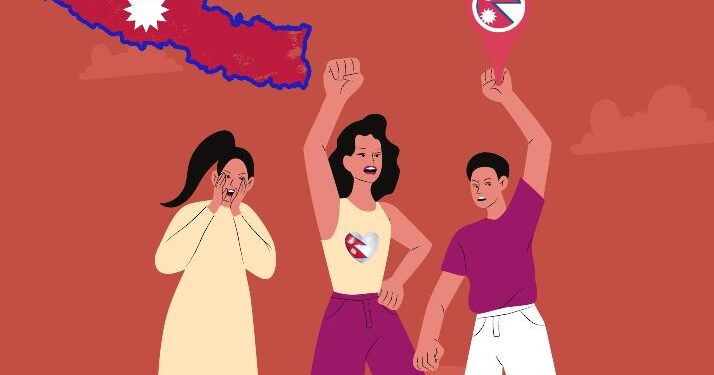
A Day of Reflection: What Democracy Means to Nepal in the 21st Century

The Most Popular Traditional Sports in Nepal

Recent Posts
- 5 Beautiful Anniversary Poems to Honor Your Parents’ Love
- 125 Happy Birthday Wishes For Little Bhanja in Hindi प्यारे भांजे के जन्मदिन पर खास शुभकामनाएँ
- 5 Poems About Dashain Festival of Nepal For Students
- Make Your Bhanja’s Birthday Unforgettable with These 150 Loving Messages
- Decentralization vs. Centralization: Understanding the Debate Surrounding the Digital Yuan

- Privacy Policy
© 2023 Wishes, Messages, Travel, Lifestyle, Tips in English, Hindi and Nepali Mount Everest. Legal Support by Quotes .
- Travel, Information And Lifestyle Blog For Nepal & Nepalese People

- Survey Report on Current Hard Drug U...

Survey Report on Current Hard Drug Users in Nepal - 2069
Publications - released in 2013.
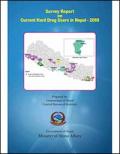
Drug abuse is a worldwide problem that affects millions of people, and Nepal is no exception. Over the last years, growing drug use has been of increasing concern to the society in Nepal. It is mainly the young boys and girls who are engaging in drug use for a variety of reasons and many young Nepalese have already died from drug use. Drug use poses serious challenges as it affects foremost the health and life of the drug user, the social well-being of the family and community.
The primary objective of the survey was to estimate the total number of hard drug users in Nepal and hence to identify pattern and extent of drug use across the country, such as: age, sex, education, age at first drug intake, frequency/duration of drug use, mode of drug use, expenses made on drug and the perception of drug users towards the Government etc.
Alcohol and drug abuse in Nepal
Affiliation.
- 1 Mental Hospital, Lagankhel, Kathmandu, Nepal.
- PMID: 1392549
- DOI: 10.1111/j.1360-0443.1992.tb02733.x
Alcohol use has been in Nepal since time immemorial. Social tolerance to alcohol use is quite high and so far alcohol has not been taken seriously either by the Government or by any social organization. Production, sale, and consumption of alcohol is ever on the increase and it could be taken as the number one problem drug in the country. Cannabis and opium use has been in Nepal for centuries and in the past they did not pose much of a problem. Drug use began to be seen as a problem since only the mid-1960s and early-1970s with the influx of large numbers of hippies. Presently, the drug scene in Nepal is dominated by heroin and it has affected youths, mainly in the urban areas. A number of measures, both on supply reduction and demand reduction, have been taken by the Government together with non-Governmental organizations. However, the number of drug users is on the increase. Relapse rate following detoxification treatment is quite high. After-care and rehabilitative measures are lacking. Many drug users become involved in high-risk behaviours in spite of their knowledge of the dangers. Therefore, it calls for the change in our strategies which must be based on the thorough understanding of human nature and its behaviour.
Publication types
- Alcoholism / epidemiology*
- Cross-Sectional Studies
- Developing Countries*
- HIV Seroprevalence / trends
- Nepal / epidemiology
- Substance Abuse, Intravenous / epidemiology
- Substance-Related Disorders / epidemiology*

- Privacy policy
- Terms and conditions
Drug addiction in Nepal | Essay | Nepal -2021

DRUG ADDICTION

The excessive use of drugs is popularly called drug abuse. It has emerged as a major social problem. A drug is an intoxicant. Opium, Cocaine, brown sugar, heroine, hashish etc. are drugs. Alcohol is also another variety of drug. Once this habit is formed, it is difficult to give up.
Thus, the abuse of drugs has become an international problem. It is both an individual and social problem. The youngsters are attracted towards this bad habit in Nepal these days. Yes, it is the deadly habit, as it ruins the lives of users. Once one becomes its prey, it is very difficult to get rid of this habit without strong determination and will power. The users of drugs are rapidly increasing in urban areas. Thus, it has been the major social problems in those areas.
More than one fourth of the society especially the youths of this generation has been greatly influenced by drug. They have been lured mainly by the attractive advertisements. Similarly, we cannot ignore the role of smugglers to attract the youngsters towards this deadly habit.
They often take drug just for pleasure and fun. It is also used to free themselves from worries and anxieties. When the parents are careless about the activities and company of children, the children then fall in bad company and begin to take drugs. Pessimist feelings about future lead them to addiction. The smugglers indulge the youngsters in their trade and rather provide youths with free of cost. Drug addiction has adversely affected the individuals and the society as well. The frequent use of drug makes one physically weak. Hence, he loses immunity power. She/he becomes mentally dull and physically weak. Thus, it results in infertility, fatigue and irritation. Drug addiction causes the loss of users social prestige and rise in social crime.
This problem can be solved by rejecting it. Thus, strong will power and determination are must to discard this habit. The parents should be responsible towards their children and be careful towards their company and activities. They should be provided with needy counseling and advice. The government should make strict implementation of the law of the country to control the activities of drug trafficking, rehabilitation and reformation centers should be set up to lessen this problem providing needy counseling to the victims.
Hence, we should make immediate steps to get these problems solved. The future of the country will be nowhere if we ignore our duty to save our young people by keeping them away from drugs.

Posted by Nepticle Blog
You may like these posts, post a comment, popular posts.

Essay on importance of women education in Nepal in 300 words
IMPORTANCE OF WOMEN EDUCATION IN NEPAL WHAT IS EDUCATION? Education …

essay on science and human values in 300 words
THE VALUE OF SCIENCE The present of era is t…

general knowledge quiz questions
SCIENCE, TECHNOLOGY AND HEALTH TOP QUESTION: Ø …
- Book articles
- environmentalpollution
- formationofFossil
- human brain
- importance of agriculture
- pleasure of reading
- Rights and duties
- rivers in nepal
- student life
Featured post

Structures and Function of brain

Hello Everyone! Welcome to my blog. Here you can find any articles related to General knowledge, creative stories, articles on different subjects, Essay writting, photography and so on.
- anti-social practices (1)
- Articles (24)
- Be positive (1)
- Book articles (1)
- children day special (1)
- conscious mind (1)
- creativity (1)
- cyber law (1)
- Democracy (1)
- dowry system (1)
- drug addiction (1)
- Education (1)
- environmentalpollution (1)
- excursion (1)
- Forest in Nepal (1)
- formationofFossil (1)
- health is wealth (1)
- history (1)
- history of earth (1)
- human brain (1)
- importance of agriculture (1)
- internet (1)
- multimedia (1)
- newspapers (1)
- patriotism (1)
- pleasure of reading (1)
- quiz time (1)
- Rights and duties (1)
- rivers in nepal (1)
- social service (1)
- student life (1)
- student mind (1)
- subconscious in plants (1)
- tourism industry (1)
- unix and linux (1)
- value of science (1)
Most Popular

Essay on democracy in Nepal in 250 words.
DEMOCRACY IN NEPAL Democracy is a …

Essay on Social evils in Nepal-2021
SOCIAL EVILS …

Essay on rights and duties in 250+ words
RIGHTS AND DU…
.png)
Essay on Student life in 250 words
STUDENT LIFE The period of a human life spent at school or college for …
HUMAN BRAIN Brain There are vario…

Essay on 'Tourism in Nepal' in 250 words
TOURISM IN NEPAL We want to visi…

essay on environmental pollution in 250 words-Nepal-2022
ENVIRONMENTAL POLLUTION Environment simply…

Essay on pleasures of reading | School Essay | College Essay-2021
PLEASURES OF READING …
Social Widget
United Nations Office on Drugs and Crime
Unodc: southasia.
- Annual Report
- Costa's Corner
- Employment opportunities
- Funding and partnerships
- International days and campaigns
- Publications
- UNODC Strategy
- Contact UNODC
- Conference of the Parties to the United Nations Convention against Transnational Organized Crime and its Protocols (CTOP/COP)
- Commission on Crime Prevention and Criminal Justice (CCPCJ)
- Commission on Narcotic Drugs (CND)
- Global Youth Network
- IMOLIN - the international money laundering information network
- International Day against Drug Abuse and Illicit Trafficking (26 June)
- International Anti-Corruption Day (9 December)
- International Narcotics Control Board (INCB)
- World Drug Report
- United Nations drug, crime and terrorism treaties
- United Nations system website locator
- Afghanistan
- Baltic States
- Russian Federation
- South Eastern Europe
- Eastern Africa
- Southern Africa
- Regional Centre-Thailand
- Regional Office for South Asia
- Liaison Office - New York
- Map of Field Offices
- Regional Programme for South Asia (2024-2028)
- Combating Transnational Organised Crime
- Drug Challenges
- Prevention of HIV and AIDS
- Prevention of drug use and HIV in prisons
- Trafficking in Persons and Smuggling of Migrants
- Countering Corruption
- Crime Prevention and Criminal Justice
- Maritime Crime
- Regional Representative
- Meet the Staff
- Opportunities
Nepal: UNODC unites provincial stakeholders to strengthen criminal justice mechanisms

Kathmandu, Nepal/11 May 2024: Criminal justice reform stands at the forefront of societal progress, representing a critical avenue to enhance access to justice and safeguard fundamental rights. Strong and accountable criminal justice mechanisms are at the centre of the protection of individual liberties and the preservation of social harmony. In this respect, equipping law enforcement officials, prosecutors, and judicial personnel with the requisite knowledge and skills to navigate complex legal landscapes with precision and integrity is key.
Building on this, in collaboration with the Office of the Attorney General, a high-level provincial consultation was held in Pokhara, to identify legal and policy challenges with regard to access to justice for victims of sexual violence, polygamy, trafficking in persons, drugs and crime.
Inaugurated by Attorney General Dr. Dina Mani Pokharel, the training featured enlightening sessions by Deputy Attorney General Mr. Sanjeeb Raj Regmi and Joint Government Attorney Mr. Som Kanta Bhandari focusing on key areas within the criminal justice system. Their insights shed light on the gaps and challenges embedded within existing laws and procedures, emphasizing the urgency for amendments to ensure equitable access to justice for all individuals, especially victims of gender-based violence (GBV).
The consultation was attended by senior judges, police officials and prosecutors, who collectively formulated a comprehensive set of recommendations aimed at revitalizing the criminal justice landscape. Their interventions highlighted the need to review and revise legislation pertaining to rape, human trafficking, and drug-related offenses. Emphasizing the importance of evidence-based approaches, stakeholders called for modern investigative techniques to bolster prosecution efforts and ensure the swift delivery of justice.
Participants also advocated capacity building of prosecutors with the tools necessary to navigate complex legal terrain, the implementation of plea bargaining and diversion mechanisms to safeguard the interests of vulnerable groups, particularly children. Discussions also focused on the necessity of clarifying laws pertaining to sexual offenses against LGBTI+ individuals, advocating for uniformity and inclusivity within the justice system.
The consultation acted as a catalyst for action, galvanizing criminal justice actors to redouble their commitment towards effecting tangible change. By amplifying the voices of those on the frontlines of justice delivery, the event underscored the collective resolve to combat impunity and uphold the rule of law.
The activity contributed to SDG 5, SDG 16 and SDG 17: https://sdg-tracker.org/
(Supported by Government of Norway)
Copyright © 2024 UNODC, All Rights Reserved, Legal Notice

IMAGES
VIDEO
COMMENTS
A survey conducted by the Government of Nepal in the year 2020, shows an average annual growth of 5.06 percent from the year 2013 to 2020 in the number of drug users in the country.. The survey found 1, 00,165 (76.2 percent) drug users were below the age of 30 years. It is evident that there is a need to address the growing problem of drug addiction in youths of the country.
abuse.1 In Nepal, more than 32% of drug users started taking drugs at the age of 15 years.2,3 Highest number of the drug users were found in Kathmandu valley (36,998) followed by Sunsari (7,407) in a national survey and the annual growth rate is 11.36%.2 In this context, the present research study was conducted to explore the
According to official data, an estimated 1,300,000 people use drugs in Nepal, while approximately 70% of them, or 90,000 people, inject drugs. In 2019, HIV prevalence amongst people who inject drugs was at 8.8% - a much higher rate than that of the general population in Nepal, which was 0.2%.
Abstract. Abuse of drugs has posed a threat to Nepali society in connection to the transmission of various diseases and rise of various unsocial and anti-social behaviors. In Nepalese context the ...
Currently, the most abused drugs in Nepal are marijuana, heroin, hashish, methamphetamine, cough syrup, Valium, LSD, and Tidigesic injections. Alcohol remains the preferred drug of use and abuse, followed by tobacco. The use of alcohol and abuse of other drugs have contributed to violent behavior by the youth, causing a major public health ...
References (0) ... 15 A rapid assessment conducted in Nepal showed that the mean age of drug abusers was 28.3 years, mostly unemployed and students. 16 The consequences of substance abuse can be ...
The situation is even more dire for youths.". A 2019 Ministry of Home Affairs survey determined that over three-quarters of people who use drugs in Nepal are under age 30. Another study found that one-third of young people who use drugs started before age 15, with almost half commencing drug use between 15 and 19.
INTRODUCTION. Cannabis is the most widely abused illicit drug globally. 1 Its source is the plants: Cannabis Sativa and Cannabis Indica 2 major ingredients being Δ9-TetraHydroCannabinol and Cannabidiol. One study reported Nepalese Hashish containing 17% A9-THC and 9% cannabidiol. 3 Ethno-medicine is practiced in Nepal for generations 4,5 and Cannabis has been used for treating diarrhea ...
An overwhelming majority of drug abusers felt the need to stop abusing drugs and cost-effective drug treatment and HIV prevention programmes for IDUs are urgently needed in all areas of the country. A rapid assessment of drug abuse in Nepal was conducted at different sites, including eight municipalities in the five development regions of the country. To interview various groups of key ...
Drug abuse is one of the serious social problems in Nepal and elsewhere for a long time. Drug abuse has several effects over the human life. Burgeoning unemployment, broken family, crime, depression, love failure, formation of peer group, mass media are major problems faced by the youth of the country. This paper explores the causes of drug abuse among youth in Mid-Western Region of Nepal ...
Background Psychoactive substance use among youth is an emerging public health issue in Nepal. This exploratory study aimed to better understand the drivers of psychoactive substance use among Nepalese youth in Rupandehi district of Nepal. Materials and methods This study used a qualitative approach for data collection. Both in-depth interviews (IDI, seven participants) and focus group ...
The number of Nepali youngsters abusing drugs has spiked alarmingly over the past decade, according to Superintendent of Police Chakra Raj Joshi, also the spokesperson for the bureau. The Nepal Drug Users Survey report released by the Home Ministry in June 2020 found as many as 46,480 people abusing drugs in Bagmati Province alone.
Drugs addiction is a serious problem in the world. Following points show the effects of drugs addiction. Become victims of diseases like HIV/AIDS, depression, hepatitis, etc. Loss of physical fitness. Involvement in criminal activities. Stoppage of progress. Become offensive/aggressive. Financial crisis.
0.5% (women) in Nepal.5 The median age of initiation of tobacco use among both men and women in Nepal was 17 years.6 Similarly, a study revealed that 32% of drug users started taking drugs first time in their early age of 15.7 The families of psychoactive substance user feel socially isolated, powerless, and stigmatized, particularly when
The primary objective of the survey was to estimate the total number of hard drug users in Nepal and hence to identify pattern and extent of drug use across the country, such as: age, sex, education, age at first drug intake, frequency/duration of drug use, mode of drug use, expenses made on drug and the perception of drug users towards the Government etc.
Cannabis and opium use has been in Nepal for centuries and in the past they did not pose much of a problem. Drug use began to be seen as a problem since only the mid-1960s and early-1970s with the influx of large numbers of hippies. Presently, the drug scene in Nepal is dominated by heroin and it has affected youths, mainly in the urban areas.
30 July 2013 - Drug abuse among youth is of rising concern. Initiation into drugs begins often during teenage years and usually peaks between 18 to 25 years. Peer pressure, curiosity and lack of awareness are often cited as the main reasons for youth getting involved in drug use. It is therefore essential to generate awareness and organize programmes in schools and colleges about the ill ...
government officials in Nepal this RSA estimated the total number of drug users in Nepal to be between 40,000 - 50,000. Street children have also been noted as a group vulnerable to drug abuse and HIV/AIDS in Nepal. Dhital et al (2002) conducted a study on alcohol and drug abuse among 180 street children selected at six urban sites.
Abstract. A rapid assessment of drug abuse in Nepal was conducted at different sites, including eight municipalities in the five development regions of the country. To interview various groups of key informants, such methods as semi-structured interviews, in-depth interviews and focus group discussions were used.
Abstract and Figures. Alcohol is a socially acceptable and widely available drink in most countries. Its excessive consumption is linked to various health issues, increase in crime rate and even ...
Alcohol and drug abuse in Nepal Br J Addict. 1992 Sep;87(9):1241-8. doi: 10.1111/j.1360-0443.1992.tb02733.x. Author N M Shrestha 1 ... Presently, the drug scene in Nepal is dominated by heroin and it has affected youths, mainly in the urban areas. A number of measures, both on supply reduction and demand reduction, have been taken by the ...
The primary goal of drug use prevention is to protect individuals, especially young people, from the harmful consequences of drug abuse and addiction. Prevention efforts often target both legal and illegal drugs, including alcohol, tobacco, prescription drugs, and illicit substances. Program for Drug Addicts. Facilitation of legal support.
It has emerged as a major social problem. A drug is an intoxicant. Opium, Cocaine, brown sugar, heroine, hashish etc. are drugs. Alcohol is also another variety of drug. Once this habit is formed, it is difficult to give up. Thus, the abuse of drugs has become an international problem. It is both an individual and social problem.
Nepal: UNODC unites provincial stakeholders to strengthen criminal justice mechanisms. Kathmandu, Nepal/11 May 2024: Criminal justice reform stands at the forefront of societal progress, representing a critical avenue to enhance access to justice and safeguard fundamental rights. Strong and accountable criminal justice mechanisms are at the centre of the protection of individual liberties and ...